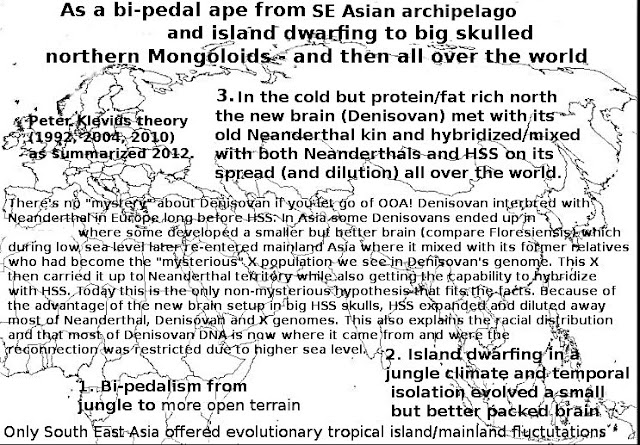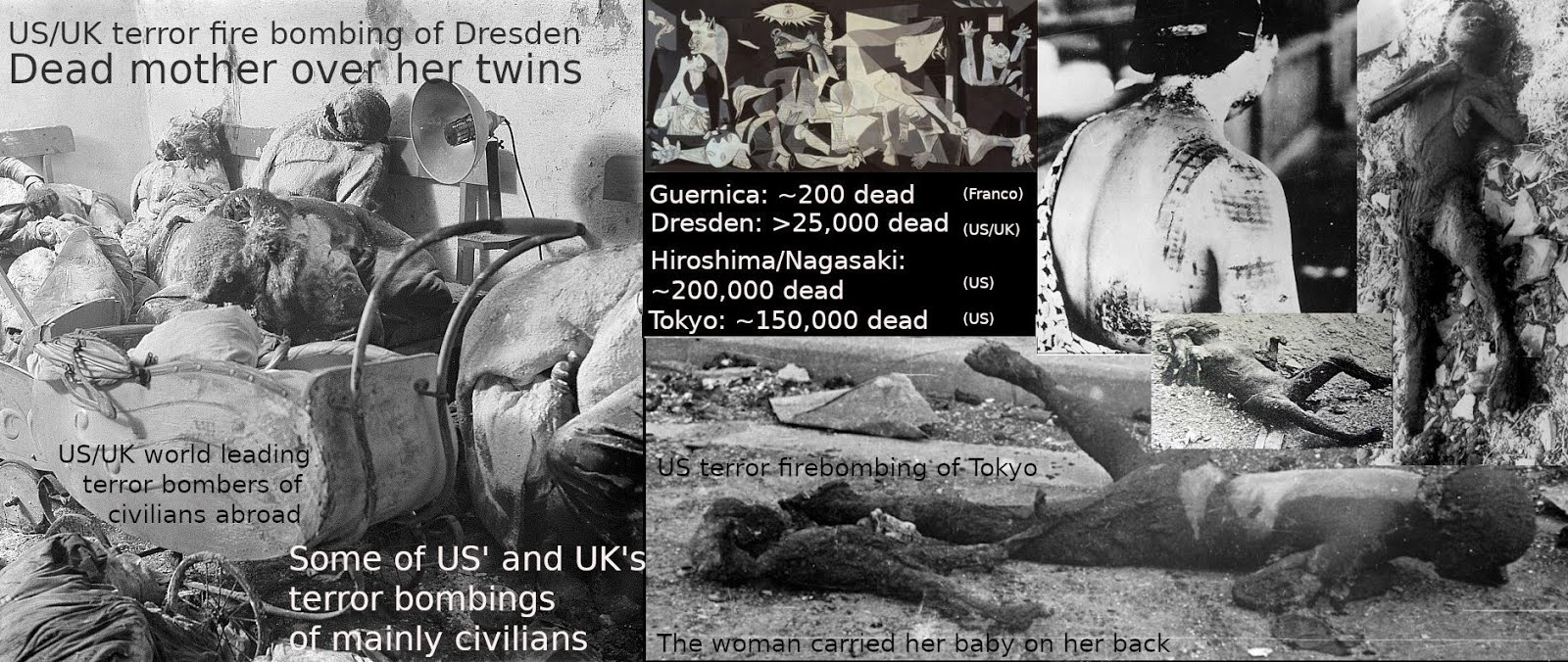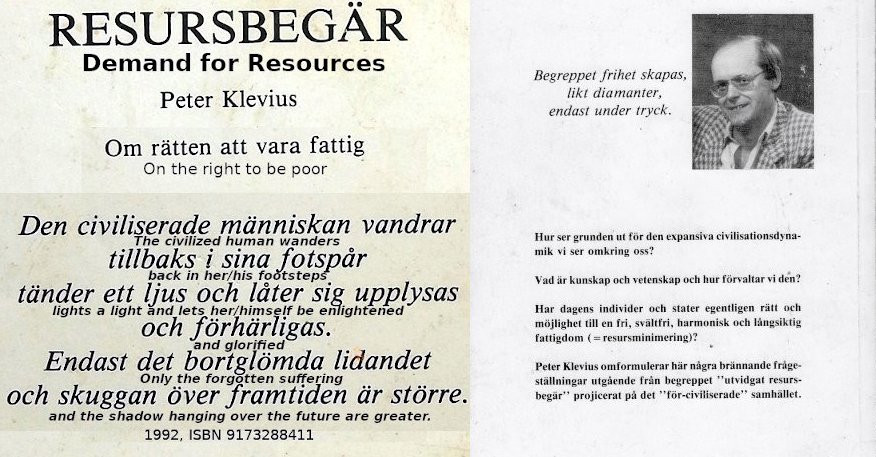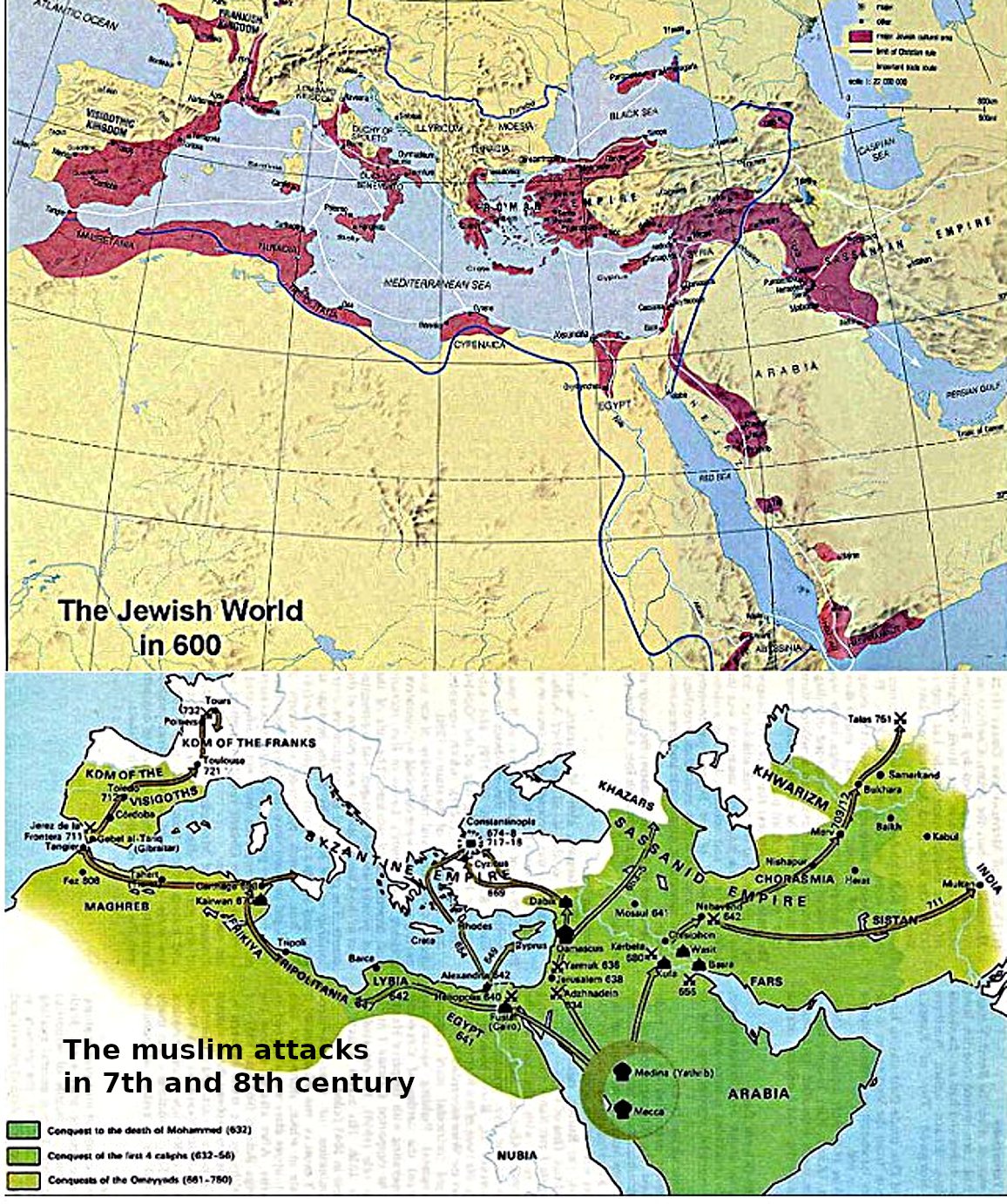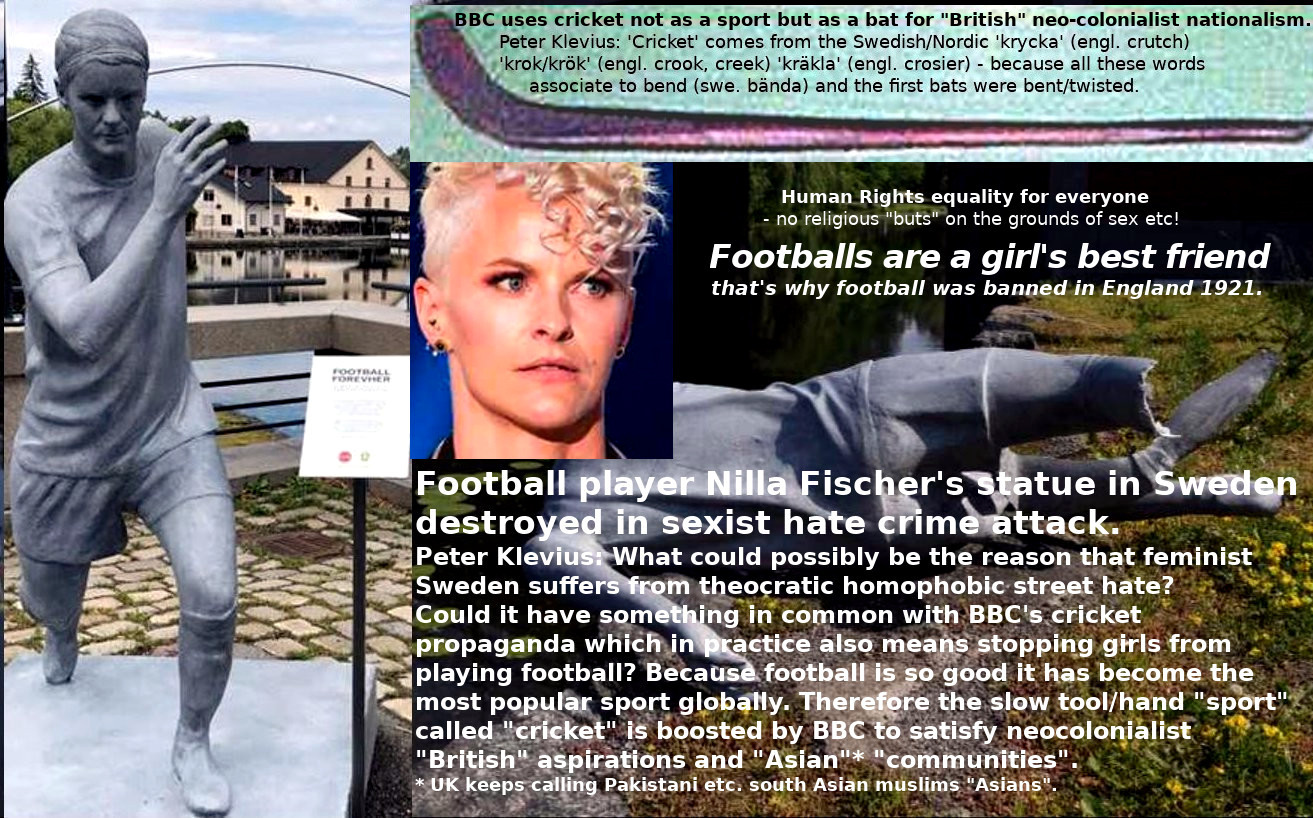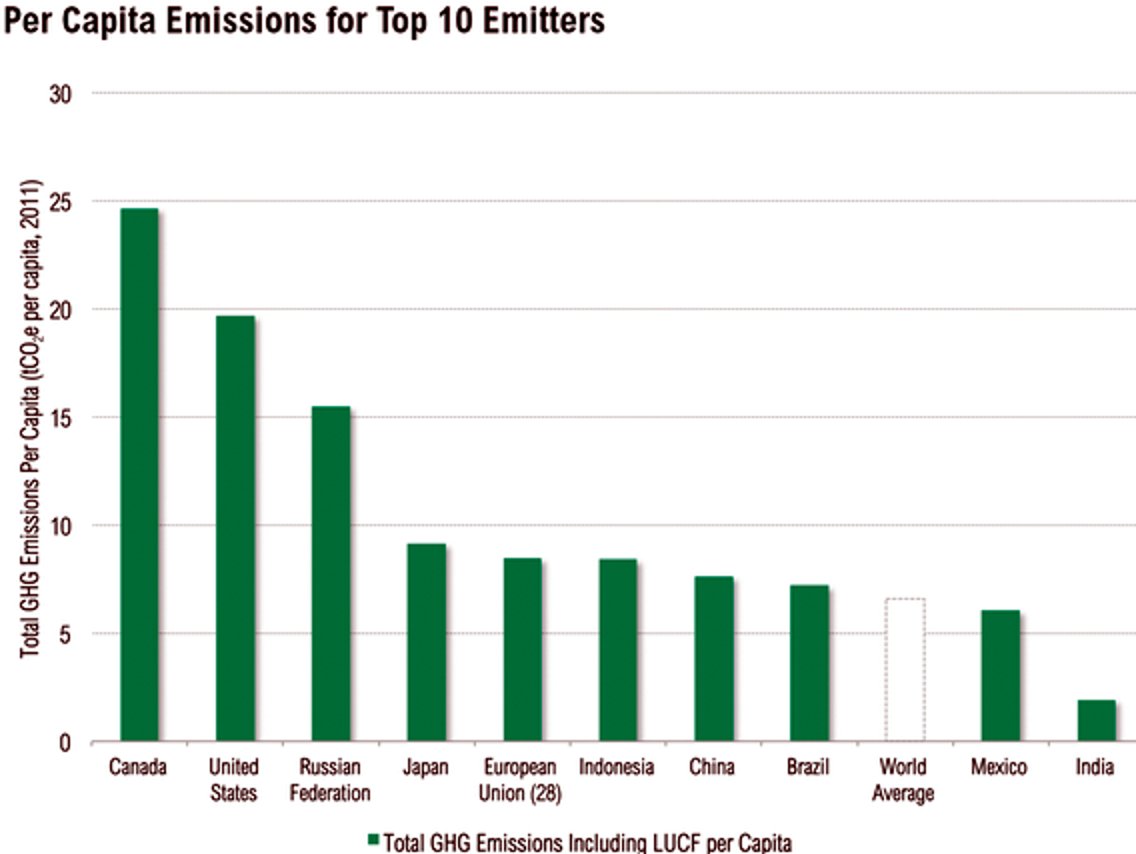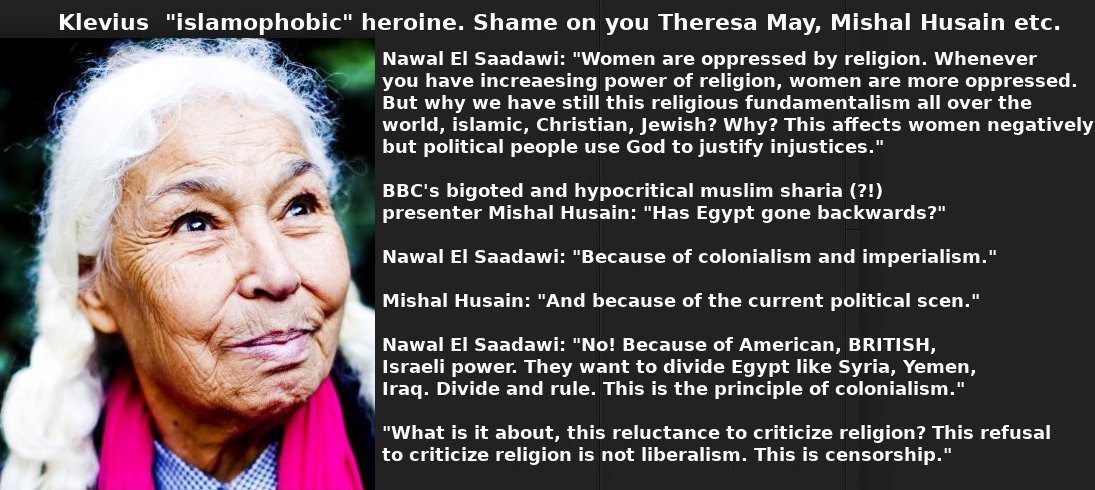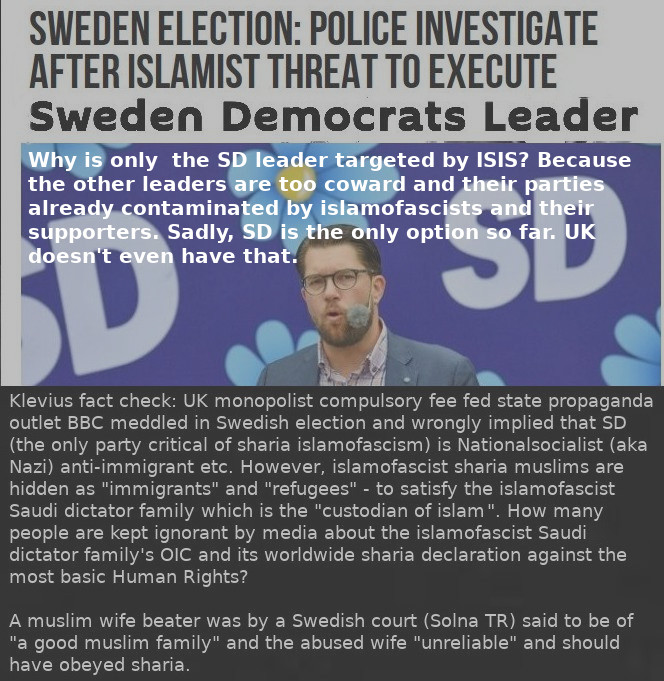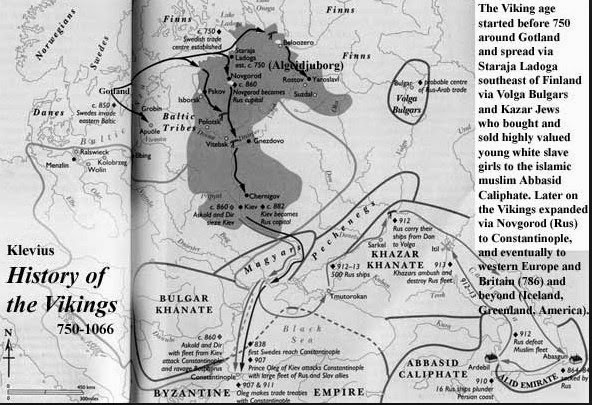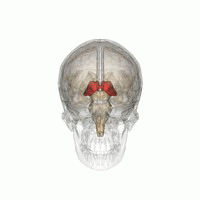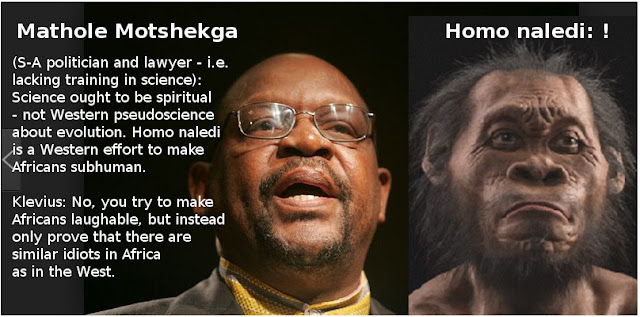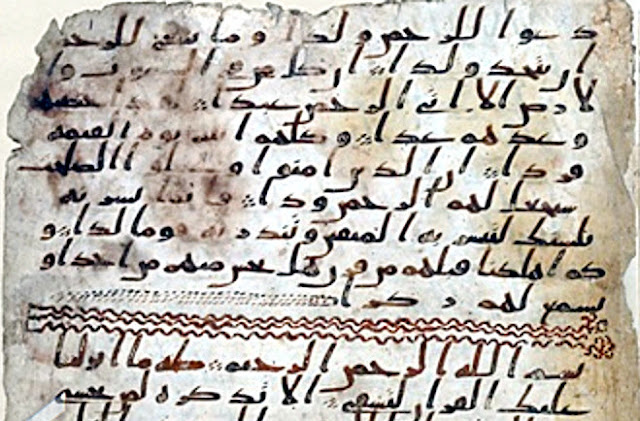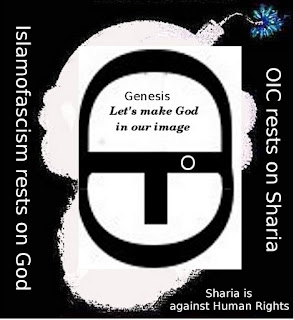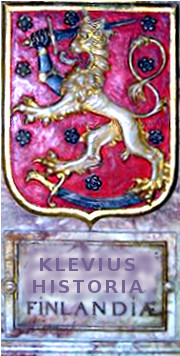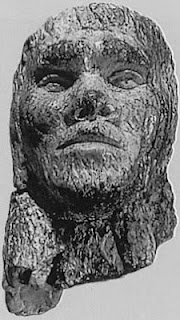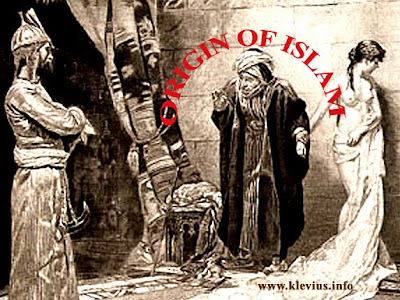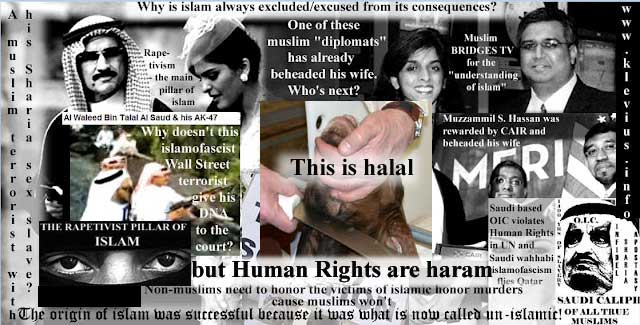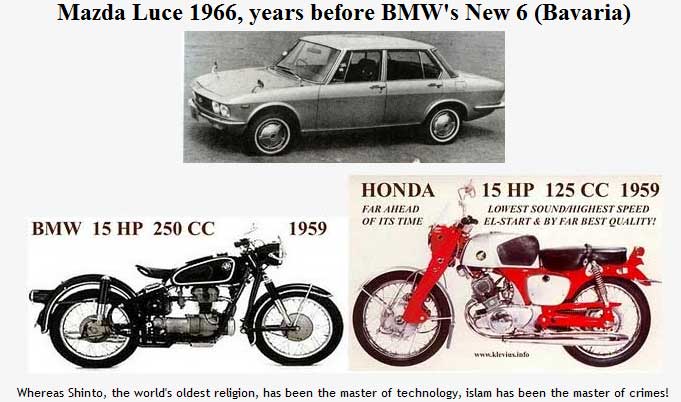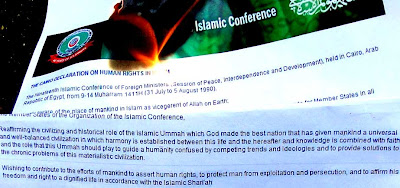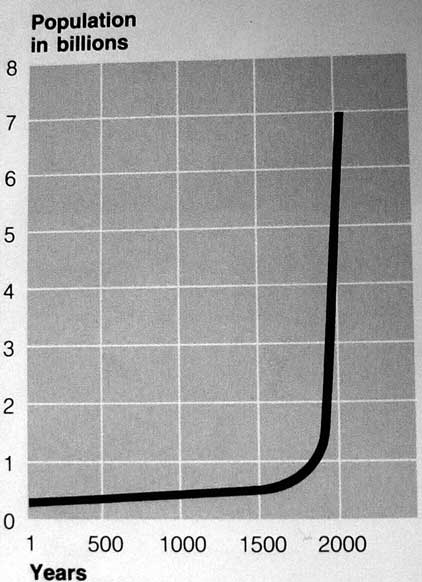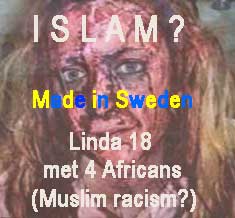Trying to understand the polarizing and warmongering without incl. the consequences of US 1971 $-theft - which are now coming home to roost because of China's superior R&D - is an equation without an x. From a pro-war politician's mouth always comes a copy of the original in US. US inflamed the existing racial tensions in Ukraine for the purpose of getting US nukes and US anti-nuke missiles on Russia's border, so to protect itself in its planned war against China - because only by creating a similar chaos as in WW2 on the Eurasian continent would US be able to continue its stolen dollar hegemony.
From US "exorbitant dollar privilege" (financial abuse of vulnerable countries - but the dollar still connected to gold) 1944-, to US financial fraud 1971- (US self-indulgent disconnection of the dollar value from gold after having spent too much on wars and space race etc.). US' "China threat" demonizing is now code for US own threat, i.e. US masking its own desperation when losing its 1971- stolen dollar hegemony because of China's growing high tech superiority. How many understand this simple truth - and how many blink it?! Before 1971 there was only one world-dollar (since Bretton Woods 1944). After the "Nixon chock" 1971 there were two: One for US dictated by US (Feds), and an other for the rest of the world, also dictated by US. And the difference was that the US-dollar made it possible for US to prosper despite trade deficit, because the rest of the world has paid the difference. Also do recognize that Roosewelt's similar move 1933 happened before the Bretton Woods agreement.
Warning! www.klevius.info has been taken over by someone not connected to Peter Klevius. All old klevius.info can be found on Klevius web museum 2003-2008.
Forget about Nature! Here you get your by far most qualified and least biased (not steered by peer "reviews" or PC editors, but by super high IQ not corrupted by religion, politics or money) scientific overall understanding of evolution (1981), human evolution (1992-), consciousness (1992-94) and AI (1979-), and Human Rights (1979- incl. sex segregation). In his topics of scientific interest Peter Klevius has got highest possible recommendations from world leading professors on the topics. And no, the author has never been caught with mental problems, abuse or criminality, and has successfully fostered all of his children. So why presenting himself like this?! Simply because his best services to science can't get properly through via other media, and here it's often dismissed as "just a blogger's opinion" - which is quite rich when considering much peer reviewed nonsense PC "science" allowed on Nature! And non-scientific posts here of course utilize the same brain power.
When terrorists attacked, raped and slaughtered more in Xinjiang than terrorists did in Israel, US declared China's peaceful law and order response a "genocide", while calling Israel's real war genocide against Palestinians "Israel's right to defend itself"! Moreover, US and its little militaristic puppet UK (where the military budget is expanding while economy is stalling and people suffer) both actively participate in Israel's genocide!
Why is a meritocratic, capitalism and trade supporting, Chinese president, with more than 2/3 approval rating, called a "dictator", while a wild capitalism and protectionism and anti-China sanctions and smearing supporting, militaristic warmongering US president with 1/3 of indirect votes on electors who were chosing among candidates chosen by the big money, is called "democratic"?! It seems that "Christian democracy" is a similarly empty but magic wording as is "the Atheist Communist dictatorship".
Atheist (like the overwhelming majority of Brits) Peter Klevius (whose genetist declared him an Anglo-Saxon) to figurehead King (but not at all absolute monarch) Charles 3: Please celebrate the year 1948 when you and the Universal Human Rights Declaration were born, by asking for forgiveness for all the atrocities England has done on the British Isles and around the world - especially the less talked about, e.g. like the opium wars, and how England was an accomplice to the islamic slave trade which is the worst ideologically based crime against humanity ever. Also please mention all the Communists and other people who constituted more than the Jews in the Holocaust but whose suffering and death is sadly not talked about at all. And do apologize for the British horrifying firebombings against civilians in the end of World War 2 whila Russia was fighting the Maxi army. And why not also apologize for stealing the Chagos Island from the Chagossians, then deporting them from their own land, and renting it out as a military base for rogue state US! Also don't forget evil British meddling and militarism consuming from foreign aid and starving and freezing Brits. And don't forget to criticize BBC which has no problem with the invitation of the islamofascist muslim terrorism supporting Saudi dictator family (a real absolute kingdom which, unlike China, doesn't accept Human Rights) but never stops its unfounded racist Sinophobic spitting on China and its extremely balanced Hong Kong policy against seditious British backed terrorism against the "one nation two systems" incl. the attacks against Hong Kong governmental and parliamentary buildings even worse than the Capitol demonstration in US which BBC paints in exactly the opposite way. Or UK's senseless "genocide" against muslims accusation against China despite the world's largest muslim organization OIC praised China for its good treatment of muslims in Xinjiang and elsewhere. Wheras BBC cherry picked jihadist stories and some random incidents not approved by the Chinese government, OIC sent a big delegation to inspect the allegations and talked with the non-jihadi muslim community! Charles! You talk about indigenous voices - did you include e.g. the Chagossians - held crucial messages about preservation of the land, respecting community and shared values, resolving conflict, and recognizing and making good on past iniquities, right! Don't worry about demonstrations and stupidities. And if you're curious about the biggest scientific questions as you say you are, then welcome to my blogs - however, Google may ask you to sign in because truth and Human Rights are "sensitive"! Read how climate change made human evolution possible in SE Asian volatile archipelago - not on a continent like Africa. And read how two craniopagus twins born 2006 solved the "greatest mystery in science" - and proved Peter Klevius theory from 1992-94 100% correct. And much more!
How did US become the devil of the world? The seed was planted 1971 when US chose the criminal path by stealing the dollar! And today US lures, abuses, corrupts and threatens the rest of the West through its stolen dollar hegemony which it uses for demonizing, warmongering, and militarization against modern China - a country that in every aspect beats US and could stand as a model for the confused West, and which success means that even Taiwan starts leaning towards mainland China (to which it belongs and even US itself admits it does) because it promises a better future (just see how much wealthier Hong Kong is already per capita compared to Taiwan). Moreover, some half of the Taiwanese don't share the ruling party's anti-China policy - which fact scum media BBC never tells its compulsory fee paying brainwashed listeners about. So evil US wants war against China before China-Taiwan relations become even better.
20230314 US drone wasn't protected by "freedom of navigation" because it participated in the Ukraine war before taken down by Russian fighter jet.
Everyone who has followed me knows that I am, and always have been, anti-Maoist - but modern China is something else entirely. First, the U.S. declares modern China a "threat" and then militarizes against this contrived threat. Sinophobic demonization of modern China is inspired by US/CIA propaganda and its own prejudices. And the warmongers of Brexit UK submit to the US and go against the people suffering from US dollar hegemony inflation. Take away the racist glasses and Xi&Co almost comes across as a Jesus, and as far from "dictatorship" as you can get compared to the dictatorship of the United States and how the West's politicians go against the will of the people regarding, for example, NATO and militaristic warmongering. Modern capitalist China has nothing in common with Mao's China, but uses the word 'communism' partly to imply continuity, but above all to refer to something to which all countries even in the West refer, i.e. fairer distribution. Nor has China historically ever engaged in the same kind of colonialist and imperialist expansion as the West. This makes modern China credible as it claims to support all countries' right to self-government and free from interference. Xi has no power of his own, but only reflects the absolute majority of the will of the people and was therefore 100% unanimously re-elected - only an idiot would propose an inferior leader, just look at Xi's track record. China's "Communist Party" has a better functioning meritocratic democracy than the West ever had because China's leadership since Mao's death, has been about doing what Mao used as a floundering but never allowed in practice, i.e. "the dictatorship of the people". Take the example of Covid where the modern "Communist Party" was forced to submit to the people's age-old Confucian respect for the elderly, i.e. protect them from contagion - and then again because of the will of the people (with a little "help" from the CIA) to open up when Omicron turned out to be mild. We should all be afraid of the US - not be against China. The Silicon Valley bank could be the beginning of the end for the rotten United States — and hopefully the beginning of a better and more peaceful United States! The current direction only leads to regression and perhaps war. In the West, politicians try to brainwash voters with the help of US-controlled or influenced media, while in China it is exactly the opposite, that is, the leadership is constantly (not only in elections as in the West) sensitive to the will of the people. And why is the US/CIA/West on the side of the Islamists - in the same way that they are on NATO's side by constantly spitting CIA lies about China?! China is the opposite of threat compared to the US/NATO/West. But the U.S. has since the dollar theft in 1971, painted itself into a corner - which modern China's R&D frms have laid bare to anyone (who wants) that sUSA should be put out of business and pay for its dollar theft in 1971-, but instead allows the US's so-called "allies" to deceive themselves as useful idiots under the US criminal dollar hegemony. OIC has checked the senseless alleged "genocide" against muslims in China and not only found any evidence but instead even praised China's leadership for its good treatment of muslims. Islamism supporting USA and its Western "allies" behave exactly as the most conservative Taliban, i.e. not letting the women out in education and work. And the Western lies about Hong Kong and democracy is just against democracy, because the West tries to support a tiny (CIA influenced?) anti-China movement - which is exactly the opposite to the agreed "one country, two systems" principle - which clearly excludes the possibility of Hong Kong not belonging to China. And Taiwan is less wealthy per capita than Hong Kong and a huge part of the Taiwanese actually want to belong to mainland China.
The ultimate U.S. hypocrisy against China: When all muslims' world organization O.I.C. visits Xinjiang etc. and thanks Beijing for its good treatment of muslims - then US cherry picks CIA and BBC fake "reports" based on interviews with jihadist families or cases of prison or police abuse (which happen in every country - and especially in US). It's appalling that the West supports OIC's sharia which violates the most basic of Universal Human Rights, but doesn't listen to OIC when it comes to China!
$-freeloader U.S. is the worst threat to the world!
Warning, don't invest in US because it's going down! How? It's not the debt ceiling nor the dollar per se but simply because US can't keep up with China's R&D, which fact will become inevitably apparent for consumers globally. US makes its own rules and imposes them globally. China makes its own rules and lets others do their own (the Global Security Initiative). US' dollar theft from 1971- is coming to an end when people realize that after China's rise US is no longer an asset but a risk - then US bonds will be worthless. So to keep floating US abuses its weaker "allies" while calling China "enemy". Don't let a declining and dangerous U.S. take over your country! U.S. tries in vain to contain China so to be able to continue its criminal dollar hegemony by sucking money and blood from the rest of the world in the wake of its massive dollar theft beginning in 1971 when U.S. betrayed its promise to keep the dollar fixed to gold. The undemocratic U.S. Fed then in effect became the world's financial dictator. U.S. dollar theft means a general decrease in purchasing power outside U.S., i.e. the price the world has to pay for U.S. stolen wealth. U.S. is the only country in the world that despite trade deficit and massive national debt, via its criminal dollar hegemony can force the rest of the world to pay for it. You need a super computer to exactly calculate U.S. debt to the world. However the suffering caused by U.S. fraud and militarism is even beyond a super computer. Let the world vote about whether U.S. should be defaulted and prosecuted! Western politicians - seduced by the popular Old Nordic dialect (or creole) called English - seem to reason that by being "allied" with $-freeloader U.S. ("the greater U.S.") they will benefit technologically and financially. But the reality (1971-) is just the opposite. Only Japan and Korea can compete with China when it comes to homogenity, general IQ, education amd R&D - except that they are ten times smaller, and their cooperation with the extortionist parasite U.S. will inevitably weaken them. In a very short future not only Wall Street and some tech geeks, but people in general will start understanding they took the wrong train going in the wrong direction on a faulty track into the arms of an armed blood sucking dying giant.
We live in a world in which an authoritarian state, $-freeloader narcissistic U.S., controls the digital infrastructure, enjoys the dominant position in the world's technology platforms, controls the means of production for critical technologies, and harnesses a new wave of general purpose technologies, like biotech and new energy technologies, to transform the world society, economy and military, to continue feeding U.S.' parasitic needs. However, the really funny thing is that US smears China for exactly what US itself is.
Why didn't NATO (US) stop the real genocide and grave Human Rights violations (since 2014) in Ukraine?! And when Russia did, the NATO (US) attacked Russia. And what about the islamofascist Saudi dictator family's atrocities in Yemen - just to mention one from the Saudi pile?!
China is now not only outperforming the West technologically but also the capitalist country that has come the furthest in balancing greed for the good of the people. In contrast to communist dictatorships such as the Soviets, Mao's China, North Korea and others, modern China is more democratic than most Western countries. This is because, via a meritocratic system, political career is built from the bottom up, i.e. local politicians must show results in order to move forward, while together they later form a political communication link between Beijing and the people, which means that unlike dictatorships, it is the top that is most sensitive to grassroots dissatisfaction. And this is proven in several Western research projects which unilaterally show a popular support that is sky-high above, for example, the US.
Peter Klevius art analysis: When kings possessed antidemocratic total power (as the Saudi islamofascist murderer and terrorist war criminal "king" still today), they could deliberately show off their personhood. However, when kingdom became art - not to say sign post - then a "good" king or queen became someone who like Elizabeth had to shut up and instead be filled with the content of "the eye of the beholder" - just like art, which is always excluded from its artist. My guess is that she could only really trust her husband - 'husband' is Swedish meaning 'hus' (house) and 'band' means ties like in 'bond'. However, her son Charles has an extremely poor record at that - which may be entertaining, especially for republicans.
US should be the "enemy" rather than modern China
And when will Liz Truss declare the islamofascist "custodians of islam", the Saudi dictator family - who has murdered, tortured, terrorized and committed war crimes - an enemy?
With the U.S. dollar as the world's main reserve currency - since 1971 criminally disconnected from its promised gold connection - and with the U.S. controlling global financial and monetary flow U.S. has raised massive debt while printing money - not "out of thin air" but out of the world. The U.S. economy hence rests on financial colonialism and imperialism, i.e. forcibly robbing its value from other countries. And when excess liquidity drives up global inflation, and the Fed raises interest rates and tightens monetary policy, it also widens its interest rate gap with other countries, while attracting international capital to the otherwise empty (and doomed) U.S. dollar.
The Brits should blame US, the militant financial $-freeloader (since 1971) - not modern China, the peaceful tech and wealth building rescuer at home and around the world! Bank of England is a helpless pawn against the feds. At the very moment when especially UK but also the rest of the world needs China the most, then dangerous and militant (CIA steered?) Liz Truss declares China an "enemy". Hello! It's US that 2014 ignited the low scale Ukrainian civil war to a fullblown deadly genocide against Russians, and 2022 to a real proxy war via NATO threatening Russia for the ultimate purpose of attacking China. And it is the US' antidemokratic (decoupled from democratic institutions) Federal Reserve that is behind inflation and the fall of the pound and other financial problems outside US. US is the only country in the world that can survive heavy deficit by counterfeiting money. It's US that is the root of high inflation, energy costs, supply shortages etc. (because of modern China). The feds has since 1913 been the factual dictator of US, and when US became bankrupt after a costly Vietnam war and space (incl. military) program it 1971 unscrupulously cheated with the promised dollar connection to gold. US hence started a fullblown robbing of the world with the dollar as the world currency and now culminating in an untenable money printing that together with China's economic and tech rise threatens US criminal $-freeloading. US is a theocracy if measured by how much "in god we trust" is involved in policy and politics, and that the Supreme Court is 100% religious, in stark contrast to the huge number of Atheist people in US. This has also led to US using islamists against China.
Whereas anyone can bacome a researcher, to qualify as a scientist you also need top intelligence and a very good overview of the topic. Long time ago profssors used to at least fulfil the latter. However, due to an increase in non-scientific influence this is no longer the case - which opens up a wonderful workspace for Peter Klevius. So why trust Peter Klevius instead of professors, BBC and other trolls? Because 1. Peter Klevius lacks such vulnerabilities and has a much higher IQ (beware of IQ-phobia) than most professors or world leaders - not to mention journalists 2. Peter Klevius has a long and clean life record when it comes to women, children, crimes, drugs etc. 3. Peter Klevius has no finacial or career ties to anything he writes about 4. Peter Klevius doesn't (sadly) know (20220326) a single Russian or Chinese, and has never visited the countries nor having any other connections 5. Peter Klevius groundbreaking scientific achievements (e.g. about evolution, consciousness, sex segregation, sociology, psychoanalysis etc.) can all be dated to publications, theses (and after 1998 also on the web) or correspondence with professors considered top of their game. Possibly all of them may also qualify as first of its kind - or at the very least certainly not copied from others - as others seem to do with Peter Klevius' works, without even giving him credit. 6. Peter Klevius had the most unprivileged start of life and adulthood - but also the most privileged when it comes to brain power, dopamin-serotonin balance and psychological stability - to an extent that he can't possibly believe in the psychological non sense excuse that "we're all a little mad".
Peter Klevius to Boris Johnson: It was only half of the Brits who voted Brexit, and it was only half of the Ukrainians who voted for Ukrexit. However, in Ukraine it ended with civil war instigated by UK's ally $-freeloader rogue state US. You should really have kept your peaceful Huawei instead of being pushed to the militant F35!
US has already sunk below the surface but abuses the "West" as its snorkel. What most people don't realize is that by following US you step downwards in future development compared to China. Little Japan already showed the world how to beat the West in technology. China is more than ten times bigger. And when people - sooner or later - realize the difference, the backlash will be harsh. Peter Klevius asks: Which war (post WW2) has NOT been instigated by rogue state $-freeloader US? Korea, Vietnam, Serbia, Iraq, Georgia, Ukraine, Libya, Yemen, Syria etc.. US, which has also used nukes, biological wepons, and torture, tops by far the list of war criminals - and US allies are gravely complicit!
We're constantly told "not to incite hatred against muslims" when we're just criticizing sharia islam for its lack of Human Rights. However, when US/CIA not only incites hatred but also weaponizes it, no one in the West seems to care. Why?! How many more should suffer and die because of US senseless behavior when facing a future where its $-freeloading is coming home to roost because of China's success?
World economies (CIA World Factbook 2022):
1 China
2/3 US, EU
4 India
5 Japan
6 Germmany
7 Russia
8 Brazil
9 France
10 UK
Dear reader, stop supporting/aiding dangerous rogue state US! Otherwise US $-desperation (i.e. that it will lose its financial stealing hegemony because of China's growth) will lead to it deliberately starting a WW3. Except for human suffering and lower standard, it would be the great reset for $-freeloader US to stand in the ruins and continue being a stealing and ruling world dictator. No other country poses a similar threat.
Religion is segregation.
Judaism: We are the chosen people!
Christianity: Christ will forgive, you sinner!
Islam: Everyone is born muslim, you infidel!
Human Right is de-segregation, you human!
Peter Klevius wonders if you can spot the difference between the People's republic of China, the Congress' republic of US, and the Parliament's/government's "democracy" of UK. Hint, the clue is in the word 'people' and the fact that Chinese are more satisfied with their democracy than US and UK people. Moreover, can you spot the difference between modern China and Stalin's, Mao's, Castro's, Pol Pot's etc. Communist countries? And when it comes to unjust sentencing, spying, surveilling, detaining/torturing/killing people, US is definitely worse than China. Not to mention US global meddling, militarism and dictatorial fiat $-freeloading. A US that can't manufacture its own chips but tries to hinder China from it. And if you aren't on US sponsored IS-Uyghurs side - why spit on China?! And if you aren't on US sponsored IS-Uyghurs side - why spit on China?! Why is US calling anti-islamism "human rights violation"?! And when will US stop dealing with Saudi, NATO (e.g. Turkey) etc. Human Rights violators?!Btw, Peter Klevius suggests buying Chinese property stocks now. After all, there are more rural Chinese than the entire US population, waiting for getting urban after this temporary slow down.
Why doesn't Peter Klevius publish his groundbreaking science in Nature? Because he has no peers! Peer review, according to Google, is the evaluation of work by people with similar competence. Peter Klevius healthy mind and total lack of institutional/financial/political/career bias combined with extra high intelligence is unique in science - and it's precisely therefore his best scientific achievments can't be evaluated by peer-biased people but need a blog to be presented because 1) they would never be peer approved in Nature 2) they would never be produced in a "proper" form with painstaking efforts to squeeze in citations/references etc. that contribute nothing. Whom should Peter Klevius quote about
EMAH/consciousness,
out-of SE Asia, or about
hetersosexual attraction and sex segregation? When I made my phd on sex segregated resistance against female football I was asked to quote feminists. I did, and after every quote I had to negate it. Alternatively it would have silenced the women's voices in my in-depth interviews re. thair experience about resistance. After all, it was feminists behind the 1921 ban against women's football in England, and it was the most powerful feminists in Sweden who for a decade opposed girls and women playing football after the Swedish FA had included it. So instead of me testing Nature, you test me - before "anti-feminism", "anti-out-of-Africa" and "anti-religion" are criminalized as "hate speech"! - In anthropology fossils usually get all kinds of nicknames before scientifically "baptized". However, precisely because Homo floresiensis (the definite proof that humans evolved in SE Asia) was the "missing link" that afropologists wanted to find in Africa (how could an allround mover and allround eater ever evolve on a continent?!) they needed to dismiss it at every level incl. continue calling it a "hobbit". And when it comes to EMAH/consciousness it's extremely simple - yet not "simplistic" at all. However, the culprit is what humans are most proud about, i.e. language. By giving something one doesn't comprehend but wants to put in a package, a name, will continue to contain its blurred definition. This is why EMAH only deals with 'now' and the body of past this now lands on. Of course this leads to everything having "consciousness". A brick "remembers" a stain of paint as long as it's there - and with some "therapeutical" investgation in a laboratory perhaps even longer. And a stain of paint on your skin is exactly the same. However, unlike the the brick you've also got a brain that may also be affected by the stain. This could be compared with a hollow brick where the paint has vanished from the outside but submerged so that when cutting the brick it "remembers" it and tells the cutting blade about it. And for more "sophistication" just add millions of differect colors unevenly spread. Our brain is no different from the rest of the body. If Frankenstein with tomorrow's tech had created an adult human body, then that body wouldn't be able to walk or talk etc. because it lacked the body program we've been programmed with by living.
The US-led climate hoax against China: $-freeloader US uses its hegemony to cover up the worst global threat, i.e. itself. And targets China which challenges its hegemony. A sustained and coordinated campaign aimed at undermining the credibility of China. China is already way more democratic than US - especially when considering that its infrastructure today is already where it inevitably will be tomorrow in a technologically lagging US. In other words, technology itself puts ever more distinction on our behavior - compare e.g. the shift from unmarked cash to marked card/online payments. And as an extra bonus China has extremely low criminality, better privacy law, and incredible record of improving poverty and welfare both home and abroad compared to US. Just consider how US has painted itself into a corner by the 1971 cheating that disconnected the dollar from US' own means, hence creating a situation with no other return than lowering its standard (i.e. stopping printing dollar that the rest of the world have had to pay for due to US' global financial empire tentacles) or a new war (which US is already brewing). Where US uses CIA meddling, sanctions and militarism, China has risen with honest manufacturing and trade.
Peter Klevius: Do note that my
klevius.info is an experimental webmuseum made 2003 and deliberately hasn't been touched upon since 2007.
20211103: Why is BBC 4 news so silent about CIA's murder plot and ongoing extradition request against Julian Assange, but instead has plenty of news time to repeatedly tell listeners about some cricket player (muslim?) who 'was allegedly hurt' because of 'verbal abuse'?
$-freeloader US is the main driver of dangerous global militarism and state terror. It's also a many times bigger per capita polluter than China.
Why is BBC repeating the lie that "China is the biggest polluter" when in fact it's one of the smallest?! And the only reason to not use per capita would be that China, unlike e.g. similar size Africa, has a single government. But even then China shines as the by far best led country. China is the technological future that we all have to walk - not led by the Chinese, but by technology. And because of US's desperation as its dollar-thieving (since 1971) is now threatened by China irresistibly passing them technologically and economically, China actually serves as a protected "soft landing model" for the future AI world (China's new privacy law, tech crackdown etc.) is exactly what most people want), while aggressive U.S. is a threat to peace and prosperity. Google is precisely the state link Chinese companies are accused of being, and US's "alliance" with "colored" and muslims is basically Sinophobia, i.e. the fear of losing control of those whom it has abused - it simply divides the world into good colored/religious and evil Chinese/Atheists (and evil whites who disagree). US-led "anti-communism" is not about communism or any belief that China would attack the rest of the world (as the US has done, after all). Almost everyone understands that today's China has nothing in common with Cuba, the Soviet Union, Pol Pot, and Mao's China.
20210926 UK became even more a totalitarian right wing militaristic one party state when Labour cut off its left wing. And unlike China, UK has no meritocracy demand on MPs, nor has it any people's democracy even close to that of China (just consider how the Western, US steered, media told you Xi ordered less gaming for kids when in fact it was a broad demand from parent).
And China forces its companies to use less energy - and the Sinophobic West of course spits on this environmental effort when some energy companies break the limits and can't deliver.
The West, not China, is the biggest emitter of pollution.
What's not to like about China?! Best privacy law: least crimes: best high tech: best tech control: best poverty extermination: best manufacturer: best meritocratic democracy happiness: best trust in leadership, applauded by OIC for treatment of muslims, etc. And badly behaving $-freeloader and financial (and militaristic) global dictator U.S. jailed Huawei CFO Meng Wanzhou in a foreign country for her normal business in an other foreign country (whose prsidential candidate was murdered by US in a third foreign country) that US didn't happen to like as it didn't like the success of Chinese Huawei.
China hating bigoted and hypocritical West (i.e. US+puppets) - which strangly calls itself "the international community" - worries about Taliban sharia while West's close ally, the islamofascist Saudi dictator family (behind 9/11 and most other islamic terror) has the most medieval form of sharia of any muslim country!
Btw, most feminists are sharia muslims - and
feminism ticks most fascism boxes.
Peter Klevius to his readers: Never forget that fascism emerged in the very midst of what is now in anti-China rhetoric called "the international community" or the West. And the roots of Western fascism has never been treated but live on. Ask yourself, what if China had behaved like the murderous terror rogue state $-freeloader U.S.?!
Islamism wants islamic "human rights". Feminism wants women's "human rights". Peter Klevius wants Human Rights. Together with their close ally Saudi Arabia, US and its puppet UK have among the worst Human Rights records - yet they blame China and Russia instead.
Fact correcting BBC's lies: Rogue state $-freeloader U.S. is also the by far much worse
per capita greenhouse gas polluter than China.
Peter Klevius (the only serious anthropologist?!) to afropologists: If you honestly and with simple words would explain the essence of the out-of-Africa myth/hoax to a child s/he wouldn't believe a word of your story: A cold adapted (mongoloid phenotype) population P1 (Homo sapiens), which eats everything and has almost infinite time and skills to move anywhere on land - lives all over a southern "island" (Africa) that has an easily accessible bridge (Sinai) to an other "island" (Eurasia), but somehow cannot get out for hundreds of thousands of years. And when they tried they couldn't survive on places where their primitive relatives (Homo erectus) for 2 million years had thrived all over the places from the tropics to the northern cold. Then the kid would probably ask why you keep telling things that make no sense. And when you answer by saying that this now living population P2 on the warm island - but with features seen in all cold adapted populations P3 far north of the bridge - has the oldest DNA, then the kid would probably ask you if you have ever considered the possibility that those genes were aquired in the cold north far on the other side of the bridge. And your last resort to convince the child concists of some bone fragments that fit in a shoe box together with a decent pair of shoes - and there is no agreement about what they really are - and are the only thing we have between the chimp-like Lucy and the human-like erectus. And what would you answer when the kid then asks how a tiny Lucy-like (poor bipedalism) population A4 could possibly make it out of Africa all the way over the Wallace line to Flores as well as to the Philippines, long before Homo sapiens managed to do so? Peter Klevius suggests you and your kids learn from the best:
Peter Klevius theory
Speciation needs isolation over time and the best evolutionary lab has been SE Asian archipelago. Like all primates, carnivores, ungulates etc. we also came out of SE Asia with a new brain setup (due to island shrinking and mainland enlargement of this new brain setup), got coldadapted in the north and then spread all over the world while mixing with other Homo sapiens in a pattern easily recognizable.
Peter Klevius evolution formula.
Peter Klevius serious questions to you "out of Africa" believer! Ask yourself: How come that the oldest primates came from outside Africa; that the oldest great ape divergence happened outside Africa; that the oldest bi-pedals are from outside Africa; that the only australopithecines with a Homo skull lived as far from Africa you can get; that the oldest truly modern looking skull is from eastern China (and to Chris Stringer - its slightly archaic bun fits a very old age); that the oldest Africans are mongoloid; that the latest genetic mix that shaped the modern human happened in northern Asia and is traced to SE Asia; that the earliest sophisticated art (e.g. a drilled and polished perfect shiny stone bracelet from Siberia, perfect paintings and figurines) and tools (e.g. a perfect sewing needle, flutes etc) are found from Iberia to Sulawesi - but not in Africa so far; that the oldest round skulled Homo sapiens in sub-Saharan Africa is much younger than similar skulls in Eurasia; that we lack ancient enough DNA from Africa to use as evidence (although afropologists happily do), etc. etc.?
Peter Klevius theory answers all these questions - and more.
U.S. main brain asset is East Asians - same with China... East-Asians (mostly Chinese) also took most gold medals in Tokyo Olympics. China won shared gold in the gold-medal race (39 golds - why are some excluding Hong Kong's gold).
Peter Klevius suggests taking the knee for Human Rights instead of for certain "races" based on skin color, religion - or sex.
The main threat against Taiwan is U.S. starting a war. But China just has to wait until the Taiwanese anyway want to rejoin because of Cnina's fast growing superior R&D, high tech, infrastructure, privacy law, economy etc.. For U.S. it's just the opposite. And West's hollow rant about "liberty" and "party-democracy" echoes back against China's democracy where the Chinese vote for truly merited individuals and against corruption. And Chinese hightech will, after some political delay come near you anyway - while in the meantime being called "assertive threat from CCP". And there's no more "Communism" in China's progress than there is Christianity in U.S' militaristic war mongering, criminal sanctions, $-freeloading, extrajudicial murders, unfair justice, torture, spying on everyone, use of islamists etc..
U.S. "Americans"! Payback time! When Peter Klevius bought his Japan made Citizen Eco Drive chronograph watch it cost ~ $240 in US and ~ $340 in EU. Those ~ $100 is what "American" (i.e. U.S. people - not all Americans) $-freeloaders owe to the rest of the world because of benefitting locally by money printing and pricing the main global reserve currency - but the end is near. $100 trillions - or more?!
Apoorva Mandavilli (New York Times): "Someday we will stop talking about the lab leak theory and maybe even admit its racist roots. But alas, that day is not yet here." Peter Klevius wonders what made her later delete it?! Fiat-money-world-$-freeloader-US' intention is not at all to clarify anything but instead to keep up hate against China. Would Fiat-money-world-$-freeloader-US and its UK puppet let Chinese inspect Fort Detrick and over 200 US bio-labs all over the world and UK's notorious military research at Porton Down, Salisbury. So while Chinese and "Chinese" looking people now are the most harrassed, BBC gives it no real attention while filling its news with BLM and "worries about islamophobia". Btw, if you poke any s.c. "free speech debate" you'll always find islamic efforts for "blasphemy" laws - and never laws against real blasphemy against basic negative Human Rights of 1948.
The West has abandoned Human Rights for the sake of sharia islam and is again becoming what it fought against - itself. Communistphobia (an "autoimmune" reaction now boosted by US' collapse and due aggression) led to Fascism, Nazism and WW2.
Why do the worst (per capita and consumption) militant polluters and hypocrites (Fiat $-freeloaderUS, UK, Australia etc.) lie about China. the world's best source for cleaner tech?!
Fiat $-freeloader US' influence behind Sinophobic attacks against China, the world's by far largest economy and future of tech, privacy law and Human Rights, and with less assaults, rapes and murders etc. than e.g. US and EU, while the "democratic West" turns sharia theocratic and militant. And why is islamism called "religion" and Confuzianism "propaganda"?!
Peter Klevius: Why would religious precepts and Human Rights denial be more worthy of protection than political ones? After all, Human Rights are there to guide legislators and the Chinese trust their politicians much more than Westerners trust theirs. So there's a case to be made against anti-China hate propaganda which harmfully affects Chinese and "Chinese" looking people.
The senseless flaw of monotheism: The pompous self-delusion of oneself as "god's" chosen individual while projecting one's "beliefs" on "god's" chosen "community" - which in turn projects a collectivist "belief" on its individuals. Freedom of thought doesn't mean freedom from law - and freedom of religion doesn't mean freedom from Human Rights.
The only "ideology" that flawlessly fits negative Human Rights is Atheism (not believeing in any supremacist "god"). Lod/Lydda in Israel should be a warning that convinces anyone about the necessity to abandon racist and sexist monotheist religions and instead support the basic negative Human Rights of 1948 to guide legislation and behavior for a positive human future for all.
https://negativehumanrights.blogspot.com/2021/05/negative-human-rights-for-positive.html
When should islam pay for 1400 years of genocides?
20210503: The world needs urgently a tougher stance on US and its aggressive hypocrisy and criminal behavior! Every anti-China rant Western politicians puke is licking a sick US ass and boosted by populist Sinophobic Western nationalism. New Zealand is now blamed for not spying and hating China enough while the criminal Saudi dictator family is a close ally and OIC's violations of Human Rights is ok.
20210416: US' puppet sidekick UK cowardly runs away when it cannot hide in the master's shadow anymore - leaving Afghanistan's women without protection against islamic evil.
US declares Turkish murder and islamization of more than a million Armenians a genocide while UK declares China's de-islamization and education of backward Chinese Uyghurs a "genocide".
Joe Biden's threat: "China will not become the leading country in the world, the wealthiest country in the world, and the most powerful country in the world on my watch!” And history proves US is the dangerous one that wants to dictate and bully the world to keep its $-freeloader hegemony.
Xi Jinping: "China will never seek hegemony, no matter how strong it becomes." And he has the longest civilization to back it up with.
Peter Klevius warns the Brits about the danger posed by spy master Jeremy Fleming's delusional, dangerous and Sinophobic China "analysis" which, if followed, may lead to stagnation and even US initiated war. It's all about UK either chosing a dangerous puppet status under US decline and stagnation by supported US' populist riding on pre-existing anti-Chinese (and anti-mongoloid racism, compare e.g. footballer Son Heung-Min and BBC lacking to report hate crimes against Chinese etc) sentiments - or simply benefitting from China's success through cooperation. The "danger" of new Chibese surveillance tech becomes ok later on in the West. However, China has now better privacy protection than the West, and China's meritocratic political representation combined with the world's toughest anti-corruption, makes West look bleak in comparison. And unlike UK, China has a real written constituion that gives women the same rights as men without exeption - someting US is still lacking, as are UK's sharia courts.
Don't respect islam as long as islam doesn't respect Human Rights! And if you don't trust Peter Klevius (2001-) on this, then trust Council of Europe's (2019) basically similar criticism of islam's main worldly (except for Gabriel) representative, Saudi based and steered OIC's Human Rights violating sharia declaration CDHRI! Moreover, the most pious muslims seem to be the ones furthest distancing themselves from Human Rights.
Peter Klevius to the women of Greenham Common: Aren't the Saudi allied and posturing "in cheat and global nUKes we trust" right wing Sinophobic Brexiters a bigger threat than Iran?
BBC is the world's main spreader of anti-Sinoist hate speech and populist Sinophobic propaganda on an industrial scale and therefore guilty of inciting crimes against humanity!
First spitting on China and when China reacts using it as an excuse for more spitting on China.
The original (negative) Human Rights (1948) means the individual is not to be imposed an action of another individual, group, government, religion etc. Negative Human Rights hence function as the guidance and guardian against unneccessarily restricting legislation. Sharia islam, i.e. in praxis Saudi based and steered OIC's notorious* sharia declaration, is the very opposite. However, UK and BBC seem to approve of islam's Human Rights violations while calling China's efforts to stifle them "human rights abuse".
* Similarly criticized by Peter Klevius and the Council of Europe. Are both "islamophobes"?!
Global China for peace and wealth vs. "global UK" for more hate incitement, lies, threats, nukes, warmonger and miltarism under the shield of the militaristic world dictator and $-freeloader US. Compare this to
UN's Resident Coordinator in China, Siddharth Chatterjee, who says "we stand in a unique position to cooperate with the Government of China and apply its successes of lifting hundreds of million people out of poverty globally. China has shown its firm belief in the principles of multilateralism. As I witnessed in Kenya, China's donations of personal protective equipment and other supplies played a critical role during the disruption in global supply chains in March 2020. And every day I am in China, I am inspired by what I see around me, what China has achieved and can achieve as a country."
But US/UK do their utmost to stop "assertive Chinese influence". And a Sinophobic parliament shouts "genocide" when China protects women's Human Rights.
Without a fair reason UK declares Chinese a "threat" while Brits and other "infidels" are constantly threatened by Human Rights violating islamism.
20210320: The world's master fake news troll farm BBC today still uses conspiracy theorist, warmonger and China hater Pompeo to smear China and spread anti-Sinoism - but nothing about islamist Human Rights violating atrocities (e.g. 50 children beheaded by islamists in Mocambique etc.), !? Btw, UK abducts proportionally many more children than China - and expose them to islamist child abuse. Peter Klevius feels truly ashamed of looking like a Westerner. Btw, how can you excuse US criminal behavior: First benefitting from monopolizing global web tech and then using this monopoly as a weapon against competitors?!
$-freeloader US and its UK puppet don't care about the wellbeing of Chinese but want only to damage China's success. Sinophobic UK parliament should just shut up talking about China and democracy. People living legally in their own state EU were robbed of their democracy by UK! And even UK nationals are just subjects, not citizens.
BBC, the world's worst war mongering and hate spreading propaganda troll farm, uses Chinese "Guantanamo"* prisoner fotage out of context as "evidence" of how "truthful" BBC is! * US detained muslim terrorist suspects outside US! BBC stereotypes whatever to fit "genocide" in China but doesn't mind US-UK-Australian torture and murder of civilians. Where China stands for tech and wealth development $-freeloader US + UK-Australia stand for spreadinng lies and militarist tensions. And why so silent about UK torture of Assange while declaring an Iranian spy suspect as "innocent" simply because she says so (Iran, like US, doesn't approve of double citizenship).
Uncritical democracy with islam inevitably means the death of Human Rights. Peter Klevius probably has some half of muslims on his side in saying so.
BBC welcomes Jo Johnson when he now says "China is authoritarian, almost neo-totalitarian regime". Peter Klevius wonders how that fits with a country which leadership is much more approved of than Western ones?! Even an idiot (but not BBC) can see that China's modern Communism has nothing to do with Maoism or Soviet Communism. The only criticism left the West can come up with is name calling. The welfare, progress and out of poverty success for Chinese people has nothing in common with "conventional Communism". On the contrary, it delivers exactly where s.c. "democracies" (one might even argue that China is closer to democracy than the West) often fail. "Democracies" are anyway one party states supported by at the most some half of the population compared to China's qualified majority. So China's "authoritarian" Communist "dictatorship" is as far you can get from the West's beloved Sunni islamist theocracy, steered by the murderous and war crimes committing Saudi dictator family. So why is China declared an enemy while Saudi is an ally! Moreover, China's new privacy law will protect the individual much better than any similar laws in in the West. Why? Because China's leadership thinks the individual's privacy is too important to fiddle with (read the draft). Something the West has given up (to US). And who was it that started smearing, lying, spreading rumours and conspiracy theories, military threats etc. against China in the forst place? Sinophobic racism from the West for the purpose of aiding the US $-freeloader.
Peter Klevius: Every muslim is responsible for muslims racism and sexism. So stop shouting "you're not a muslim" to a muslim who believes and knows the Koran by heart! Immigration is ok - if you criminalize anti-Human Rights sharia muslims (and their accompllices)!
In cheat we trust: UK decreases aid to Yemen while increasing weapons sale to the muslim Saudi dictator family and spending more on militarism. And BBC is more concerned about Uyghurs than Yemenites. And worries more about Buddhists who don't like to be attacked, raped, murdered etc. than about their radicalized muslim attackers.
Lord Palmerston, UK PM who supported the Confederacy in the US civil war, hoping a dissolution of the Union would weaken the US: "The Chinese are uncivilized and the British must attack China to show up their superiority as well as to demonstrate what a civilized nation could do."
US is now the worst global threat that only cooperating with China could mitigate - instead of being US' puppets. Peter Klevius: Why is US ordering 600 new nukes - i.e. the double of China's total?
Why is China the only NPT state to give an unqualified negative security assurance with its "no first use"?
Why isn't UK's parliament more interested in the real genocide in Yemen than the made up "genocide" in Xinjiang?!
Why is UK applauding the conviction of Syrian soldiers while UK soldiers go free from similar crimes against humanity.
Why isn't the real genocide that muslim Uyghurs have committed against non-muslim Uyghurs talked about?!
When Dominic Raab visited Saudi Arabia he failed to raise the question of Saudi Human Rights abuses.However, in UN he lied about "China's industrial scale Human Rights abuses". He deliberately conflated unchecked BBC "reports" by East Turkestan jihadis with China's out of poverty and de-radicalization programs. And of course forgot to say sterilization was offered after three (3) children and with economical and educational incentives for muslim women tied at home by sharia.
The militant $-freeloader US' spread of misinfo about China has made Chinese the most hated ethnicity while sharia muslims are the most protected - and US' puppet UK's Dominic Raab keeps spitting Sinophobia while supporting anti-Human Rights islamism.
Peter Klevius (like e.g. most really intelligent Jews is an Atheist, not confined with "faith", politics, career, finance etc.): While the West accepts OIC's Human Rights violating sharia islamism, China defends Human Rights against islamism. And unlike US' constitution, China's constitution is fully aligned with women's rights in the 1948 Human Rights declaration. So to avoid the West turning into a full muslim theocracy (OIC sharia) fractioned in infighting, we better become Sinophils instead of Sinophobes! "Anti-democratic ommunism" is now the only (empty - the only difference is that MPs in China are under harder scrutiny) argument the West still swings.
Many Afgan women's dream is to be treated like Uighur women in China. However, the criminal militaristic war mongering rogue state U.S. abandons them and instead declares islamist Uighur terrorists not terrorists anymore and accuses China's emancipation efforts for "genocide" and "human rights violation".
1990 islam officially and globally (via UN) rejected Human Rights (the Saudi based and steered OIC's sharia declaration witch gravely violates the most basic of Human Rights)!
If Atheist Chinese had reproduced like muslims, there'd be more s.c. "Mongoloids" than the whole world population today.
BBC is the world's biggest lying and faking propaganda troll - BBC's agenda has absolutely nothing to do with journalistic principles but is a mix of US pressure spiced with the worst of "Britishness" (UK cuts foreign aid from 0.7-0.5% and adds the same money to militarism) meeting in Saudi/OIC islamofascist sharia against basic Human Rights. BBC: UK has to aid Saudi war crimes and genocides cause else Russia and China would do it. UK's future is as a militaristic puppet for US (compare BBC's campaign against Johnson and Corbyn). Peter Klevius to BBC's Sinophobic muslim presenters in their ivory minaret: How many muslim women are detained in UK's sharia camps?
US secretary of state, Pompeo declares Islamic State Uighur jihadi not terrorists - so they can attack China and get support from US (as in Syria).
Peter Klevius to Chinese people: I'm not a racist Sinophobe - although I certainly look like one.I also wonder when US women will get the same rights as Chinese women - ERA is still lacking from US constitution? Chinese constitution, Article 2: Women shall enjoy equal rights with men in all aspects of political, economic, cultural, social and family life.
Islam, because of its origin (in which it's stuck by Muhammed, sharia and apostasy ban) inevitably paves the way for islamist extremism and due road to medieval backwardness. However, possibly more than half of s.c. "muslims" don't want this anti-Human Rights sharia, but sadly, islam has put all muslims under an apostasy ban, and Western idiots don't give freedom loving "muslims" a helping hand against sharia islam but instead help sharia islamists by calling sound criticism against islam "islamophobia". However, US is the real problem and China's stance against islamist extremism is now, funnily enough, the only defense for freedom and Human Rights - while UN has been hijacked by Saudi based and steered OIC. But wherever you see islamist uprising (e.g. near China or its belt-and-road) - check for US/CIA with a long history of meddling and militarism! US is turning peaceful belt and road into suffering and war - usually by using muslim extremism in the frontline together with massive propaganda via US controlled media and politics.
Nation of Islam: Black lives matter more than other races! Black is original! Peter Klevius: Aka supremacist racism! No, black is adaptive and isn't "original" at all because there's no "black gene". The darkest skin in the world is as far from Africa you can get - and the darkest African skin developed quite recently. And black skin is doomed to vanish anyway. And the Homo lineage was light skinned until 1.2 Myr when they were already all over the old world. And the oldest modern humans are light skinned mongoloids. Educate yourself.
It's an irony that China now seems to offer the only defense of those very Human Rights it's accused of not following - while the West supports islamism that violates those Human Rights (compare Saudi based and steered OIC's global sharia declaration against Human Rights). Moreover, apostasy (i.e. leaving islam, which is the worst crime in islam) and the fact that the muslim man determines the faith for the children no matter who is the mother, together have to be added to any estimation of muslim population growth.
Why do Sinophobic BBC and UK parliament call it "deradicalization" in UK, US and Saudi Arabia, but "genocide" in China?! And why wasn't one-child policy against Atheist Han Chinese called "genocide" while Uighur muslims were allowed to have many children?! Btw, e.g. Sweden abducts many more children than China does in Xinjiang - and for extremely questionable reasons (read Peter Klevius' thesis Pathological Symbiosis and ask yourself why Sweden gets away with its Human Rights violations). Answer: It's all about U.S. being a lousy loser and therefore behaving appalingly badly with smear, threats, illegal sanctions, militaristic aggression etc! Btw, China is already number one in economy and most technology - and accelerating compared to US. So you stupid US puppets - take note!
Shame on everyone who blinks Saudi based and steered OIC's anti-human rights sharia for all the world's muslims while spitting on China!
Should BBC and some politicians be put on a Nurenberg trial after this relentless and demonizing Sinophobia campaign and deliberate lies?
US is rottening fast and should therefore go for peace and cooperation! Despite using $-freeloading, sanctions, breaking treaties, murdering officials and politicians in other countries during state visits etc., hindering the use of tech previously used to monopolize US companies globally etc., US now wants to destroy Huawei and other Chinese companies, not for security but because US is inevitably losing the tech race. And no, it isn't the Chinese state support any more than US uses state support for force-feeding Apple, Google etc. and backed up by US state militaristic interventions, spying, interference, threats etc. globally. And China was the first to recognize the danger of Covid-19 - not "delaying" anything" but quite the contrary (see below)!
BBC News' deliberately misleading and dangerous anti-China rant 20200706: "China ought to be our enemy! We can't do any business with China because of Hong Kong, and the sterilization of Uyghur muslims which some people (BBC and its cherry picked guests?!) think amounts to genocide". Peter Kleius: That Chinese muslims should follow the same laws as other Chinese, and that China uses similar deradicalization programmes proposed in the West, BBC thinks is "suppression". And volontary sterilization in the West BBC calls "genocide" in China. And Hong Kong's security law is similar to those in the West - and not as bad as US - and are definitely neccessary to keep "one nation" together under the immense pressure from US and its puppet regimes.
2020 4th of July: Peter Klevius wonders when US women will get the same rights as Chinese women - ERA is still lacking from US constitution? Article 2, Chinese constitution: Women shall enjoy equal rights with men in all aspects of political, economic, cultural, social and family life. Peter Klevius also wonders why aggressive and assertive US attacks peaceful China (every schism has US fingerprints) while siding with the war crimes committing murdeous islamofascist Saudi dictator family whose OIC sharia clearly denies eqaulity for women?! China is doing more good to more people than any other country today. Is this the reason?!20200701: BBC News asks for war against China but complains "we have only two aircraft carriers". Peter Klevius wonders how sick BBC has become?!
20200618: Why is the most cemtral witness, Inge Morelius (later aka Mårelius) in the Swedish PM Palme's murder case, deleted by Google's search engine from Peter Klevius revealing murder analysis?!
20200616: When China discovers Covid-19 with a European DNA profile on a cutting board for Norwegian salmon, the BBC thinks it's the communist party.
Why is BBC so quiet about Churchill's secret (until 2018) pact with Stalin in 1939 which would have divided Scandinavia between Russia and UK?! And US' NATO puppet Jens Stoltenberg repeats like a parrot his master's voice against China - while a civil war is going on inside NATO between Greece and Turkey.
African Pygmy lives matter! Colonized and enslaved for more than 3,500 years by the Eurasian Bantu etc. intruders we now call Africans. It's a senseless irony that "Africans" (Bantus etc. newcomers) who enslaved and mixed with original Africans (Khoisan and especially Pygmies from whom they got their phenotype) and later were enslaved by muslim Arabs and their "African" collaborators now get a brain drop at the West African ports where islam exported slaves. Any old African genes come from Khoisan and Pygmies - and ultimately out of Asia - not Africa. "Out-of-Africa" and BLM are created by white idiots and only feed supremacism. Read "out-of-Africa" more dangerous than the Piltdown hoax.
Peter Klevius 20200604: What if Floyd had been white or Chinese?! And the officers members of Nation of Islam? And how do we even know that any racism was involved? And what about a fair trial? All human lives matter!
20200603: UK's Sinophobic right wing anti-EU migration Brexiters now want to import 3 million Chinese from Hong Kong!?
20200529: In its everyday Sinophobia rant BBC today managed in one sentence to accuse Chinese, China and Xi separately - and even missing the stock smear, i.e. the "communist party". However in a very near future China will develop and export a world leading ecosystem of non-US software, hardware, fintech, social media, telecom infrastructure etc. that everyone will long for. Stubborn and dumb stiff lipped Sinophobes will become Neanderthals in no time. Sadly few politicians understand how powerful Chinese tech development is. Japan did the same but wasn't hampered by Maoist communism and was ten times smaller. High IQ and an Atheist culture they both have in common.
The pro-Saudi and anti-China "party-within" UK's governing party is committing long term criminal harm to UK. China is the future and US is rottening with accelerating speed (the desperate sanctions against China tell it all). Only tech cooperation with China will benefit Brits and Americans. So why are UK politicians and BBC so eager to shoot their own PM and the Brits in the foot by being dictated by Pompeo, Trump and the Saudi dictator family, and boosted by a general Sinophobia racism? The "communist" scare mongering has no relevance because in practice China behaves in no way different than US - but is under constant smear and subversion attacks. And China's surveillance has actually developed less fast than that of US. US is a rogue state that murders and surveils in other countries (e.g. murdered top politician in Iran and surveilled Merkel - and you). And who likes ISIS and al-Qaeda etc. Uyghur jihadi terrorists anyway? Pompeo, Erdogan and Saudi steered islamofascists.
20200522: BBC and some right wing MPs call it a "draconian move" when China wants to stop foreign interference and people using Molotov cocktails. Really! So what about in UK?!
20200518: BBC again repeated the anti-China lie about "a silenced doctor" by inviting the former right wing and pro-Saudi (anti-)EU Research Group - now (anti-)China Research Group. How bad a journalist isn't Sarah Montague then when she didn't even try to question it - or is she muffled?! Eye dr. Li Wenliang wrongly spread out it could be SARS. It wasn't and just one hour later - and long before any police etc. had contacted him - he corrected his mistake (see fact check below).
$-freeloader US provoking China with war ships while simultaneously "leaking" "classified" rumours. Why?! Its Sinophobia is all about trying to stop China's success as the foremost spreader of wealth and high tech both in China and the world. It's not the leadership but China's success that US can't stand.
BBC sides with whoever Sinophobes - and would probably even have used Goebbels against China if he was still around. UK universities etc. are littered with dangerous Saudi (OIC) anti-Human Rights sharia jihad propaganda (incl. supprt of IS Utghur jihadi) - yet China has always been aggressively smeared all the way since UK's opium war attacks on China when it was declared "inferior" and "uncivilized". Today the problem seems to be that China is too superior and too civilized - but thankfully they have a "communist" party to blame, although the leadership has behaved better than most in the West. And when BBC talks about the "West" against China it actually means US spy organization Five Eyes (with the puppet states Australia, UK, Canada and NZ) and whoever other Sinophobes it can find elsewhere - like the Israel supporting and anti-muslim right wing Axel Springer, Europe's largest media (practically a monpoly) which is accused of e.g. censorship and interference in other countries (just like state media BBC).
Should China sue BBC and UK (not to mention US) and the far-right, anti-China and anti-muslim UK "think tank" the Jackson Society (with associated Sinophobic MPs and lords) - whose Sinophobia (disguised as "against communism" etc.) complements leftist and pro-sharia jihad muslims BBC which now so eagerly gives it a platform, as well as the closely connected US spy organization Five Eyes which has demonized China for years long before Huawei or Covid-19? The lies about China they have spread are indistinguishable from those of Pompeo and Trump. Is this baseless (compared to US/UK) hate mongering really conducive to the welfare of UK? And when China reacts to this massive Sinophobia campaign then BBC calls it "aggressive Chinese propaganda".
US "warns" about China "stealing" vaccine info because US knows that China now produces much better research than US.
BBC anti-China fake 20200506: "Hundreds if not thousands of people were likely to have been infected in Wuhan, at a time when Chinese officials said there were only a few dozen cases." Peter Klevius fact check: BBC deliberately conflates real time confirmed knowledge with calculations in retrospect.
US has made all the mistakes it accuses China for. Here's one from the top of the iceberg: Whistleblower Dr. Rick Bright, the director of the Biomedical Advanced Research and Development Authority, pressed for urgent access to funding, personnel and clinical specimens, including viruses, which he emphasized were all critically necessary to begin development of lifesaving medicines needed in the likely event that the virus spread outside of SE Asia. He was then cut out of critical meetings for raising early alarm about the virus and ousted from his position.
Chinese 5G much more reliable than US' Five Eyes, the world's most dangerous misinfo and conspiracy spreading US spy and smear organization (together with its puppet states UK, Canada, Australia and New Zealand) which "leaked" a 15-page dossier alleging "probing the possibility" the virus came from the Wuhan Institute of Virology. As Peter Klevius has said before, it didn't come from bats to humans but from some other host animal. Fake news and anti-China propaganda videos are making false and unfounded claims about "delays" and "late" human to human transmission report. Again, it was only in retrospect anyone could have known the nature of early cases. Many weren't even connectded to the wet market and many weren't affected at all despite intimate contact. Moreover, the wrong early SARS diagnosis was corrected the very same day but spread by a "whistleblower" eye doctor (see fact check below). And despite being first affected China acted better than US etc. countries. 5eyes equals Nazi Goebbels in propaganda misinfo. Every single accusation so far has built on deliberate distortion of facts. And possble improvements in retrospect would have been exactly the same in even the best of Western countroes.
Peter Klevius to Chinese people: I'm not a racist - although I certainly look like one.
Origin of Sinophobia: The 19th century Opium Wars were triggered by UK's imposition of the opium trade upon China. Lord Palmerston regarded the Chinese as uncivilized and suggested that the British must attack China to show up their superiority as well as to demonstrate what a "civilized" nation could do. The resulting concession of Hong Kong compromised China's territorial sovereignty. There's also the background to South China Sea.
"God", "Allah", or whichever "monotheistic" idol is a pathetic fallacy and "monotheism" is a ridiculous and dangerous self-delusion because your "god" is used to defend the undefendable. There are equally many "gods" as there are individuals - and the collective "god" only functions as cherry picked confirmation of the individual's "god". However, the collective "god" may combine individual evil - never individual good, because that can only be achieved by (negative) Human Rights. After all, as Peter Klevius always has said, the only way of being fully human is to allow others full humanhood (what else could possibly unite all humans) - without religious impositions/exclusions.
Peter Klevius asks for an independent international inquiry on BBC's racist Sinophobia and its support of sharia islamism - incl. how many victims and suffering it has caused because of its worldwide propaganda influence.
In the early 1990's US accused Japan of selling superior cars in US without buying crappy cars from US. And a congress woman warned for tech theft if selling US planes to Japan - but was told that those planes wouldn't even fly without Japanese high tech. At the same time EU was created to build a trade wall against Japanese products. However, Japan is more than ten times smaller than China - and isn't at the hotbed of different coronaviruses in SE Asia.
Dear reader, if you think Peter Klevius has a problem with self-assertion you're very wrong. Apart from it being connected to Peter Klevius criticism of citation cartels (see Demand for Resources, 1992:40-44) Peter Klevius main problem is your self-assertion.
Sinophobic BBC working hard for a Coup d'état together with Saudi loving and China hating MPs against PM Boris Johnson.
Peter Klevius wonders why Sinophobic state media BBC (with Tom Tugendhat etc.) goes against the state (PM, MI6 etc.) in being so extremely worried about unfounded claims about China while having no problem with the threats posed by the worst of the worst, the islamofascist Saudi dictator family's influence over UK - and BBC?!
20200417: BBC's Sinophobic muslim Razia Iqbal together with Tom Tugendhat arrange a pathetic propaganda theatre of BBC's 22:00 news hour for the most senseless and even childish smearing of China. And how can this clown (just listen to his laughter etc.!) be a leader of UK's foreign affairs committee?! Moreover, Razia Iqbal even uses Trump as an expert! Desperate...
!
20200416: State media BBC's Sinophobic Uganda rooted muslim Razia Iqbal lies about Chinese "racism" against Ugandans without telling that it was a local matter that was caused by some Africans linked to a cluster of cases in the Nigerian community in Guangzhou at a time when China had already curbed Covid-19. At least eight people diagnosed with the illness had spent time in the city's Yuexiu district, known as "Little Africa". Five were Nigerian nationals who faced widespread anger - not for being Africans but because of reports that they had broken a mandatory quarantine and been to eight restaurants and other public places instead of staying home. As a result, nearly 2,000 people they came into contact with had to be tested for Covid-19 or undergo quarantine. Guangzhou had confirmed 114 imported coronavirus cases – 16 of which were Africans. The rest were returning Chinese nationals.
20200407a.m.: UK's best PM, Boris Johnson, is much shorter (same as Einstein and Klevius dad) than Trump - but also much more intelligent. It's OK to say so when Trump is white - and loves to play on height, right?
20200412: The reason the Chinese government wanted extra control of DNA results was the previous failed report (see below) which wrongly indicated SARS. However, British media (BBC etc.) blatantly lie about it and first accused Shi Zhengli's lab for spreading infected bats, while some weeks later making her a hero and accusing the government. And no, it didn't spread from bats - but possibly from civet cats. Suspected animals are now forbidden from the market.
UK/Matt Hancock (20200402): "We will work (against Covid19) with our friends and allies." Peter Klevius: That excludes the best, i.e. China, which you, on order from US, have declared an "unfriendly enemy"!
SINOPHOBIA RACISM. US tries to pull you away from Chinese high tech superiority so US can keep feeding you with its outdated tech and influence - just as it used to do with cars and wars. Your pick: US militarism with Saudi led islamofascism - or highspeed Chinatech towards Chinese democracy and global wealth. China is the very opposite to Cuba - and already, in practise, almost identical to Western governments. Excluding China only prolongs the democratic process - and even speeds up China's high tech inside its 1.4 billion market.
Peter Klevius fact check: "COVID-19 has a natural origin and there is no evidence that the virus was made in a laboratory or otherwise engineered" (Nature). China swiftly sequenced and shared the genome worldwide. China's remarkable response on all stages was praised by WHO (but not BBC) and is in line with its superior tech advances (Mao's China would never have made it). There isn't a trace of an alleged (by BBC etc. fakes) Chinese Covid19 reporting "delay" that wouldn't have been bigger in the West. And the reason is that
for China good reputation is all that matters - now when it has already won the tech competition. China's defense against West's smear campaign is called "propaganda" - in the West. Dear US, it's time to behave! You lost the tech war to little Japan long ago. Now you've lost it against big China. Get over it. So Peter Klevius advises: Do as Wall Street, shake hands instead of producing unfounded Sinophobic smear propaganda!
!
Covid19 timeline
17 November 2019: A retrospectively confirmed case.
1 December 2019: The first known patient started experiencing symptoms but had not been to the Huanan Seafood Wholesale Market. No epidemiological link could be found between this case and later cases.
8–18 December 2019: Seven cases later diagnosed as COVID19 were documented; only two of them were linked with the Huanan Seafood Wholesale Market.
18-29 December 2019: Bronchoalveolar lavage fluid (BAL) that will eventually be used for viral genome sequencing is collected from patients.
25 December 2019: Wuhan Fifth Hospital gastroenterology director Lu Xiaohong reported suspected infection by hospital staff.
26 December 2019: Zhang Jixian identified a CT scan that showed a different pattern from other viral pneumonia.
27 December 2019: She reported to Jianghan district CCDC with four cases. During the following two days, the hospital received three similar cases, who all came from Huanan Seafood Wholesale Market. The hospital reported to the provincial and city CDC directly which initiated a field investigation with a retrospective search for pneumonia patients potentially linked to the market. They found additional such patients and on 30 December, health authorities from Hubei Province reported this cluster to CCDC who immediately sent experts to Wuhan to support the investigation. Samples from these patients were obtained for laboratory analyses.
30 December 2019: Wuhan Municipal Health Committee informed WHO, Weibo etc. about an "urgent notice on the treatment of pneumonia of unknown cause". There had been "a successive series of patients with unexplained pneumonia recently." However, a DNA report inaccurately indicated SARS on one patient. Late same day (17:43) ophthalmologist Li Wenliang WeChatted "There were 7 confirmed cases of SARS at Huanan Seafood Market." He included a patient's CT scan. At 18:42, he admitted that it wasn't proven SARS.
31 December 2019: US Centers for Disease Control and Prevention were alerted by China of an unexplained "cluster of 27 cases of pneumonia” in Wuhan.
US worst nightmare is a democratic China - which wouldn't change China but make it even more like one-party "democracies" in the West - because that would mean losing US only argument. US deliberately seeks Sinophobic confrontational aggression against China - which hampers the development and peace of the world.
US island puppets against China and EU. US, who used to treat Japan as it now treats China, is now parasitizing on former enemy Japan in an (in vane) effort to keep China high tech down, and on the much tinier UK ally to trouble EU.
Something sinister is behind when Sinophobic far right extremist politicians so desperately risk future development in UK with false accusations of "possible risks in the future", skewed presentations, and unfounded demonization of Chinese high tech. And while Klevius is posting this, all in his machine is spied on and sent to US. And why is BBC constantly only hosting Sinophobic guests who also happen to be supporters of the islamofascist Saudi dictator family and happy to allow US spying on you via US companies? The only risk Huawei poses is that the Chinese state gets fed up and makes it illegal to sell Chinese top tech to UK. China is the future of high tech, so stepping off the bus means retardation. Btw, the two main accusations against China could easily be made against US/UK as well. China wants to trade and therefore doesn't want to risk reputation. US doesn't bother about its reputation. And when it comes to clean up muslim "communities" from islamofascist extremists there's really no other difference than in numbers. Moreover, NATO/Turkey uses extremist Uyghurs against civilians in e.g. Idlib - and hypocritically accuse China when these jihadi return.
Klevius to women: NATO makes a deal with the Taliban to continue sharia oppression of women, and NATO+IS=true because NATO is the main culprit behind the suffering in Idlib. Without the support from NATO the worst muslim terrorist group would never have survived. Like IS, NATO ally Hayat Tahrir al-Sham wants to create an islamic state. Turkey/NATO backs SNA well knowing that it's together with HTS. I.e. a NATO member state invades its neighbor, sides with terrorists and gets full support from NATO when its soldiers get killed while helping the terrorists. And what about Yemen?! It's truly pathetic that muslims seem more worried about islamofascism than the West!
Peter Klevius to climatists: Sinophobia is a threat to the environment, because China has the slowest population growth and is the the least per capita polluter of main economies (see table below) and the main producer of alternative and conventional super high tech! Moreover, China lacks the same proportion of natural resources as e.g. Sweden, Norway etc. (e.g. hydropower) but instead has to deal with the dust smog blowing from the Gobi desert and the extreme cold from the north. And China bears the manufacturing pollution for products other countries then consume and profit on.
NATO (Turkey supported by US/UK) is siding with the worst muslim terrorist organization Hayat Tahrir al-Sham (some 10,000 IS jihadi) against the people of Idlib while BBC News spreads misinfo propaganda against Syria, Russia and Iran - and nothing about the Saudi dictator family.
BBC (20200217) wants to stop Chinese tech because China opposes islamofascist Uyghurs. Klevius suggests the world should stop dealing with US/UK because of involvement in war crimes and genoscides against Shia muslims.
Why is Wikipedia allowed to spread polemical, tendentious and deliberately misleading info about islam? And not a word about islam's original supremacist enslavement, booty and humiliation ideology?! This misinfo is the most harmful of all!
From a true (negative) Human Rights, as well as from a historical perspective, original islam may rather be seen as original fascism. The oldest Koranic texts and the historically verified beginning of islam both emphasize supremacism as the main tenet (blamed/excused on "Allah"). Islam conserves racism, sexism and supremacism as pointed out by true muslims (aka "fundamentalists") reinforced through sharia (e.g. by Saudi based and steered OIC's world sharia which is heavily criticized both by Klevius and the Council of Europe etc.). Islamic (and therefore muslim) supremacism is easily distinguished as it doesn't approve of Human Rights equality.
And why does Wikipedia deliberately conflate the history of islam with the fairy tales of believers in islam?!
Sinophobia is racism but "islamophobia" is criticism of an ideology. "Islamophobia" shouters are directly responsible for islamic hate crimes based on Koranic texts and hitting children of "infidels".
Chinese eyes less intrusive than Five Eyes (US and its puppets) - because China prioritizes trade and reputation while US prioritizes global spying, meddling and military control. The Saudi loving US puppets Duncan Smith, Davis, Paterson, Green, Ellwood and Seely etc. produce baseless "security" arguments for Sinophobic MPs.
U.S. flu this season Feb. 2020: 19 million illnesses, 180,000 hospitalizations, and over 10,000 deaths (China has a third less common flu than US). 2019-nCoV, 6 Feb. 2020 (estim. total death rate 0.1-0.2%, i.e. same as common flu): 28,018 cases (not illnesses) and 563 deaths. Did the eye doctors SARS rant on social media delay response in China? It wasn't SARS but much closer to common flu - but without vaccine. Instead of assisting, US/UK/BBC did the utmost to smear China with it!
Klevius warning to Finland (and the rest of the world): Don't be useful idiots in US' export of militarism! It will create tension and pull fire on you in a conflict. Four balancing power blocs is safer than one or two. Moreover, China will become the world's first true democracy thanks to AI. Don't let Sinophobia blind you. US is going down unless it starts cooperating instead of trying to rule the world. Non 5G iPhone sells well - in US - where there's no true 5G.
BBC's bigoted and hypocritical Pakistan rooted, Saudi raised and Cambridge schooled "muslim" (no veil, no Ramadan fasting, but yes to alcohol etc.) presenter Mishal Husain, like many Saudi/OIC supporters, represents the "security risk" between islam's "core" (OIC sharia) and "periphery" (e.g. "Euro-islam", "cultural islam" etc.).
Peter Klevius suggests cooperation instead of unfounded incl. religious) hate!
Klevius is ashamed over hateful, racist Western Sinophobia - and support of hateful sharia jihad. BBC's sharia supporting (?) muslim Mishal Husain now eagerly sides with Sinophobic extreme right wing politicians who support Saudi islamofascism but demonize China and Chinese (except if critcical of China). Sinophobes would treat China exactly the same if it copied US "democracy".
BBC today (20200129) forgot to tell about China already having isolated the virus for vaccine (and helped Australians to do so). However, BBC repeatedly lied that the death rate is 20%. Common flu and the new corona virus deaths (~2%) are extremely rare outside very vulnerable groups - who don't travel much.
BBC, who otherwise don't hesitate to spit on Trump, has no problem using his advisor when it comes to racist Sinophobia against Huawei. US is blackmailing UK so to hinder China's tech success and the "security issue" is actually US itself.
Niklas Arnberg, Swedish professor in virology: "Considerably higher mortality than ordinary flu." BBC: "Death toll rises as disease spreads from China."
Peter Klevius: Both are faking! Arnberg used overall death numbers although most (all?!) of these deaths have been people who could have died from ordinary flu as well. And do you really think BBC would ever have written similarly about the deadly camel flu from Saudi Arabia?!
Why is BBC only talking about Jewish victims - and why is BBC silent about the fact that most "anti-semites" (i.e. anti-Jews) are muslims? Holocaust: 6 million Jews and 11 million "others" were murdered by the German government for various discriminatory practices due to their ethnicity, Atheism, or LGBT+.
Hitler: "All character training must be derived from faith." Himmler: ""We believe in a God Almighty who stands above us; he has created the earth, the Fatherland, and he has sent us the Führer. Any human being who does not believe in God should be considered arrogant, megalomaniacal, and stupid." Klevius (the Atheist "other"): That's a description of me by most Americans and muslims. Btw, why are muslim sex predators (compare Koran and sex slaves) from Pakistan called "Asians"?! And why have they been protected while Klevius has been muffled?!
Islam trumps LGBT rights in English schools - and hateful sexist and racist muslim supremacism defending BBC is silent as usual (e.g. about Parkfield Community School 2020).
Klevius: Do you really support US/UK/BBC's disgusting racist Sinophobia madness - and their support and use of anti-Human Rights muslim islamism?! Wikipedia: In the Xinjiang riots Turkic speaking Uyghur muslims shouted/posted "kill the Han (Chinese) and Hui (Chinese speaking muslims)"!
Why is BBC so silent about Iran Air Flight 655 that was recklessly shot down by US over Iran territory killing 290 incl. 66 children?! Is it the new US puppet empire agenda? Did US aggression also cause the latest plane crash?
When BBC announces "the threats of 2020" the murders, terrorism and war crimes committing Saudi dictator family isn't included. As isn't US/UK militaristic meddling and proxy wars in Syria, Yemen, Iraq etc. However, China's peaceful trade and high tech manufacturing is!?
Saudi based and steered Human Rights violator OIC is the main legal guidance for the world's sharia muslims. BBC eagerly supports it by neglecting to criticize it while spitting on those who do. OIC's Cairo Declaration on "Human Rights" in Islam (CDHRI) is against freedom of religion - but abuses real Human Rights for the promotion of anti-Human Rights sharia islam. The CDHRI concludes in Articles 24 and 25 that all rights and freedoms mentioned are subject to the Islamic sharia, which is the declaration's sole source. OIC hence keeps the gate open for continued islamofascism in the "muslim world" - and as a convenient tool for meddling in "hostile states".
Peter Klevius fact/fake check: Why does Google (and BBC) lie and fake straight up your face about China?! When searching for 'world's biggest per capita polluters' China comes up with extra big letters despite being one of the least polluting of major economies (47th on a reliable polluters list). Moreover, China is not only the world leader for alternative technologies, but its pollution number also includes the biggest production of products exported and consumed all over the world outside China. Source: EDGAR and incl. all human activities leading to climate relevant emissions, except biomass/biofuel combustion (short-cycle carbon).
Peter Klevius Christmas greeting to BBC and Tesco: Ever thought about the possibility that muslim islamists don't like making Christmas cards but are encouraged by US/UK/BBC etc. to smear China. "We are foreign prisoners (muslims?) in Shanghai Qingpu prison China. Forced to work against our will (islamic Christophobia?). Please help us and notify human rights (ultimate bigotry if sharia muslims ask for HR) organisation (Saudi based and steered OIC?!)."
US/UK (NATO) don't accept muslims like Uighur islamists (other than as proxy soldiers) - but demand China to accept them. NATO's Sinophobia is a threat to world peace, environment and prosperity. NATO is all about US monopolizing space for its own militarism and to block China's success? In 1990s Russia was proposed as a member of NATO but is now demonized by US/UK (and BBC) as the "main enemy" together with "the challenge from China" (sic). But NATO members are guilty of offensive wars, occupations, annexations, use of chemical weapons, use of islamist terrorists, foreign interventions, extrajudicial murderings in other countries - and use of similar muslim "re-education" camps as China (why not just criminalize original evil islam?!). NATO (US) threatens the free flow of tech and wealth, and provokes hate and defensive attitudes among Chinese - hence forcing China (world leader in tech) using its financial muscles more for defense (China can't be starved like USSR in 1980s) than environment. Btw, Chinese per capita GDP is 1/3 of US, and total GDP much bigger than US - and faster growing. A fraction of the effort given to demonize "islamophobic" islam criticim, would do wonders to reduce Sinophobic racism against Chinese. And stop using the "Communist threat". China is now a capitalist country similar to Western powers - except technologically much better (and the West copies everything China does in surveillance). Do you really think much would change if China would be fully democratic - except chaos caused by NATO? NATO (US/UK) would be equally Sinophobic. In fact, what is called "democracy" in the West functions quite similarly as the leadership in China. Media propaganda, lying politicians and empty promises combined with silencing the real issues (compare BBC's fake "news") - and therefore a truly democratic vote. Moreover, the only reason capitalist China has a non-democratic leadership for the moment is precisely its justified fear for leaving it vulnerable for what happened in the past when UK and US meddled and attacked with great suffering for the Chinese people. NATO should turn against the real evil, the islamofascist Saudi dictator family.
England voted (for the second time) against Merkel’s islam import from Turkey.
Can islam be rehabilitated from its evil origin and deeds - and can unrehabilitated islam be allowed in public and private spheres?
Why is Saudi based and steered OIC's Islamic State of Gambia accusing Aung San Suu Kyi for the consequences of islamofascism OIC's sharia protects - and why isn't the murderous islamofascist war criminal and genocide committing Saudi dictator "prince" accused of anything? And why is BBC's leading muslim extremist propaganda presenter Mishal Husain allowed to "present" an absolutely one-sided pro islamist picture for BBC's compulsory fee paying listeners?
"British" nationalist hypocrisy: Get back control - and meddle, influence, intervene, spy and control all over the world.
More than half of muslims in UK are "islamophobes" (against sharia) - just like Peter Klevius, Council of Europe etc. - but opposite to BBC and many UK politicians (source: A survey of UK’s muslim communities by Martyn Frampton, David Goodhart and Khalid Mahmood MP).
BBC awards a white man who plays an odd sport few are interested in the title of "sports personality of the year 2019". Why?! Because cricket is a "british" colonial sports and also fits BBC's special interest in "asians" - but couldn't find a "british asian" good enough.
"British" nationalist hypocrisy: Get back control - and meddle, influence, intervene, spy and control all over the world.
More than half of muslims in UK are "islamophobes" (against sharia) - just like Peter Klevius, Council of Europe etc. - but opposite to BBC and many UK politicians (source: A survey of UK’s muslim communities by Martyn Frampton, David Goodhart and Khalid Mahmood MP).
BBC awards a white man who plays an odd sport few are interested in the title of "sports personality of the year 2019". Why?! Because cricket is a "british" colonial sports and also fits BBC's special interest in "asians" - but couldn't find a "british asian" good enough.
Is BBC killing UK democracy and paving the way for islamofascism?
DEMOCRACY DENIED: WARNING TO UK VOTERS ABOUT BBC's HUMANRIGHTSPHOBIA! WHO's RIGHT ON ISLAM - BBC OR THE COUNCIL OF EUROPE?BBC undermines your most basic Human Rights. BBC's "islamophobia" propaganda machine (incl. Sayeeda Warsi) boosts OIC islam while neglecting Council of Europe's sharp ("islamophobic") criticism of OIC's world sharia (Cairo declaration). SO HOW COME THAT BBC IS ALLOWED TO MEDDLE IN THE VOTING PROCESS BY ATTACKING AND SMEARING THOSE CANDIDATES WHO SHARE THE VIEW OF THE COUNCIL OF EUROPE - not to mention the anti-fascist Universal Human Rights declaration of 1948?!
How Merkel paved the way for Brexit (Erdogan deal) and aided jihad in EU. NATO (US) with former fascist state Germany now sides with islamofascism - especially Erdogan's Ottoman aspirations - and supports Uyghur jihadism in hope of placing NATO (i.e. US) nukes between Russia and China. Peter Klevius wonders whether this ill-directed jihad propaganda will promote peace and safety?
The world bully U.S. thinks it owns and rules the world after having colonized it via dollar manipulation, infiltration, spying, meddling, sanctions and the unscrupulous use of militants and militarism.
Thanks to the global dollar scam, Americans have been freeloaders on the rest of the world, the biggest per capita polluters and the U.S. by far the biggest threat to world peace via weapons built with money it stole from the world. Said by Peter Klevius who has been an anti-socialist all his life. Btw. the world's industrial revolution didn's start in England but in Sweden already in the late 17th century by inventor Christopher Polhem and capitalist Gabriel Stierncrona. Without Polhem's automation to get the rich Swedish iron ore from the mains, England had no chance to start real industrial production.
A nun's gear doesn't sign other women as "whores". However, what about a woman in an islamic "chastity" gear?
K.S. Lal (a giant among historians): Mahmud of Ghazni had marched into Hindustan again and again to wage jihad and spread the Muhammadan religion, to lay hold of its wealth, to destroy its temples, to enslave its people, sell them abroad and thereby earn profit, and to add to muslim numbers by converting the captives.
Is BBC 100% steered by muslims? Not only can you ever hear anything critical about islam and muslims - but all main channels are also occupied by sharia (OIC) supporting (i.e. against basic Human Rights equality) muslims. Nazir Afzal ('Moral maze', news, culture etc.), Mishal Husain (news, culture etc.), Samira Ahmed (news, culture etc.), Razia Iqbal (news, culture etc.). And they all keep cheating the public about it and instead pointing finger to "dumb and hateful xenophobes". Not a word about e.g. Council of Europe's harsh critcism (see below) of muslims biggest sharia organization, the Saudi based and steered OIC. Foreigners isn't the peoblem - sharia islam is!
BBC's muslims and their PC supporters also meddle in UK election by demonizing "islamophobia", i.e. trying to stop critcs of islamofascism.
Muslim child/youth fascism induced by an islam interpretation from family and strengthened by PC media, politicians etc.
BBC meddling and Saudi islamofascism
Peter Klevius: Everyone - incl. every muslim who respects Human Rights - ought to make sure to vote for an "islamophobe"! BBC and Sayeeda Warsi will make their utmost to stop critics of islamofascism in the election. Don't be robbed of your democratic right. And of course you know that the only real problem with migration is islamofascism.
BBC's "man in Hong Kong" asked street terror leader Joshua Wong if they could possibly escalate violence. And they could. One day later they put a Chinese on fire in a murder attempt.
Peter Klevius: The Saudi Aramco sale is the biggest ripoff in the world. If there's any future in oil and you don't care about environment, then why buy what's at its peak when Venezuela's PDVSA is bigger and as low it can get?!
Are you an "islamophobe" if you don't like islamist Human Rights violations? Islam has (via OIC's sharia declaration) abandoned the most basic anti-fascist Human Rights from 1948. Islam is hence the only religion in doing so - not even the Catholics have needed to replace Human Rights with "Catholic human rights".
The seed for world fascism is dormant in Saudi based and steered OIC's world sharia - opposed by ECHR and Peter Klevius, but supported by Sayeeda Warsi.
Breakit instead of Brexit because what's the point of leaving one EU while still staying in an other called UK? England voted leave.
However, unfortunately BBC demonizes China on behalf of UK's relying on militarist meddling, weapons sales and islamofascist sharia finance. So you see the solution: Cut off sharia etc. islamofascist ties and open up for prospering with China - not the over-selfish game of spying and dying of US.
BBC boosts stupid nationalist "Britishness" with peculiar "sports" like cricket and rugby because the world has already "colonized" football and the English language is a global property.
Nigel Farage is like BBC against "islamophobia" and pro-Saudi - but Boris Johnson doesn't like letter boxes and was criticized by Theresa May for being critical against the Saudis while serving as her foreign minister.
China (laws against sharia islamofascism) and EU (Human Rights against sharia islamofascism) are now the only ones protecting basic (negative*) Human Rights.
* Religious people and socialists don't like negative Human Rights simply because they prefer collectives ("communities") rather than individuals. That's why the web is full of misinfo about these rights. Read Peter Klevius definition instead if you want a deep view - or listen to Lauren Chen starting from 7:11 if you want it light The Saudi "custodian of islam" has some 1.5 billion "citizens" in the muslim world Ummah nation - and demands the world to bow them no matter what (as long they aren't Shia or so, of course). China, on the other hand, keeps its citizens and laws within its own borders. IS islam IS fascism and islam (even the archbishop agrees). So why is sharia fascism not separated from an "islam" that submits to basic Human Rights? As it stands now Saudi based and steered OIC's sharia (the 1990 Cairo declaration) still stands as the basic Human Rights violation via sharia muslims all over the world. And whereas China actively tries to erase sharia islamofascism, EU keeps promoting import of it while judicially telling us it's not right, yet doing nothing to stop it.
Unlike the West, China hasn't aggressively meddled militaristically in other countries around the world, but rather being the world's foremost spreader of new technology and wealth. And whereas the West has eagerly supported Mohammed's totalitarian aims, China has, in practise, implemented in law most of the Human Rights advices that The Council of Europe has directed against OIC. Against this background West's Saudi backing and China smearing is deeply bigoted and hypocritical.
John le Carré: I'm depressed and ashamed of British nationalism. Nationalism needs enemies but today we really have no identifiable enemies except among ourselves.
North Atlantic (sic) Treaty Organization invades a country in Mideast and attacks (with chemical weapons) a people without a country.
UK's Brexit business model: Sharia finance, weapons sale and militaristic meddling?UK Secretary of State for Foreign and Commonwealth Affairs (sic) and Global Neo-Imperialist and Militarist Meddling, Jeremy Hunt, 15 Oct. 2019: It's wrong to accuse Donald Trump - it's Americans isolationism because American taxpayers don't want to pay between 1/2 and 2/3 of the defense of Europe. And Turkey is very skilled at finding wedges and gaps between allies. UK should be EU's bridge to US.
Peter Klevius: No, EU should take care of its own defense - against whom? The Saudi dictator family who is the world's no 1 spender on weapons and islamic terror incitement and who hates EU's anti-sharia legislation? And UK taxpayers should not have to pay more for dangerous militarism. Militaristic meddling is a bad and dangerous business idea.
A Google (i.e. U.S. web monopoly) search (20191006) reports 'islamists Hong Kong' "missing". Really! No islamists in Hong Kong? Peter Klevius also wonders if EU citizens in UK are UKongers and can peacefully demand the same rights as Joshua Wong violently demands (and eagerly broadcasted by BBC) for Hong Kongers?
Peter Klevius congratulates Savid Javid for abandoning the islamofascist "islamophobia" smear. BBC’s bigoted hypocrite Mishal Husain and others ought to follow! BBC's Mark Mardell couldn't get a visa to China because of his extreme and hateful Sinophobia - but that didn't stop him/BBC from producing a fake anti-China program series while pretending to be there. Is Sinophobia really better than cooperation?
Sinophobe Tom Tugendhat, chair of UK's Foreign Affairs Committee (who has studied islam and Arabic in Mideast) suggests that English speaking universities should consider banning Chinese students because "they might be used as leverage like Huawei". Peter Klevius wonders if one could be any more racist than this, and if he doesn't see any islamofascist sharia supremacist "leverage" at all? Btw, there are more than 50,000 Chinese muslims in Hong Kong. Peter Klevius wonders how many of them are "radical" ones and participate in BBC's lengthy anti-China propaganda "news" - while the world doesn't suffer from Chinese but from muslim violence and Human Rights violations?
US/UK destroyed the lives of millions of Chinese during some hundred years of evil militaristic meddling.'BBC is now busy smearing China all the time while supporting Saudi islamofascism and violent Hong Kong demonstrators - but neglecting the mass of peaceful pro-China demonstrators. BBC also "worries" about Chinese "surveillance state" while the truth is China's technological superiority. US is much more insidious in its surveillance policies but lacks the techno - can't even produce a working 5G so far. US/UK follow exactly China but utilize the meantime to smear it. And who is really behind the Hong Kong riots? Someone who can't take China's success? But the Syria tactics won't work. US (and its UK puppet) wants to be able to meddle militarily near China - therefore its interest in Taiwan, Hong Kong, Korea, Tibet, Myanmar, Uyghur extremist muslims etc.
Peter Klevius and the Council of Europe share exactly the same "islamophobia".
Brexit was meant to protect UK from muslim invasion via Turkey's proposed visa free deal with Merkel. Even the possibility of temporary membership in ECHR (in case of a deal) isn't enough - especially considering UK will be out of reach of the European Court of Justice.
West's indulgence of islamofascism (sharia) has made its boasting against China about "democratic values" empty. The risk of you being stabbed, raped etc. by a hateful jihadi is created by your political leaders, BBC etc. - who also have arranged so it's not even called a hate crime.
Peter Klevius stands for these "stops" and due huge implications - all shame on him if you can prove him wrong (click links if you need to educate yourself before saying something stupid): Stop using
the misleading 'gender' instead of sex (sociology)!
Stop islam's abuse of Human Rights (jurisprudence)!
Stop saying humans came "out of Africa" (anthropology)!
Stop talking about "consciousness" when you don't know what you're talking about (philosophy/ai).
Islam is the problem - China is the solution.
If China today became a full democracy (and even accepting full Human Rights*) - nothing would change, because it's not the rulers but the high tech industry in China that outperforms the West. And unlike islam, China doesn't have tenets against Human Rights. However, islam is tied to its supremacist and sexist sharia tenets (OIC) which deny women full Human Rights - just the opposite to what is said in the anti-fascist Universal Human Rights declaration from 1948. If islam would accept full Human Rights it would not be islam anymore. China's economic expansion has been a non-aggressive big contributor to wealth around the world, but when China reached out its Belt and Road hand, then the West bit it and supported extremist muslim terrorists. Islam induced hate crimes and terror are based on a shared evil ideology (a global muslim collective rather than as nationals, which inspire and hail each other) - but because most are committed by lonely or gang muslims, and because police and media are told muslim "ethnicity" ought not to be revealed, then the public are kept unaware of most muslim hate crimes. How come that evilness is protected? The answer is in the question. To hide its original evilness. And how come that BBC and UK politicians dare to support islamofascism in Kashmir? Freedom from sharia for women in Kashmir!
* UK PM Theresa May opposed Human Rights.
Peter Klevius: BBC supports the islamofascist Saudi dictator family's strategic use of supremacist islam which has spred muslim hate all over the world's streets, institutions etc. (and usually not correctly, if at all, reported by BBC which instead doesn't hesitate to give long coverage of "alternative news" that better suits its propaganda) - while muslim terrorist organizations keep it within muslim territories. So if true Salafists became the "gurdians of islam's holy places" then that would mean less muslim terror elsewhere. And less to cover up for BBC. How big a contributor to the suffering of islamic supremacist hate crimes has BBC's fake (and lack of) info been? Will we in the future see BBC in an international court accused of crimes against humanity? As it stands now the spill over effect of BBC's cynical support of proxy evil is stained in blood and rape etc. over innocent people. And if true Salafists took over in muslim countries, they would quickly become non-muslim countries. A better option than today's prolonged suffering caused by the hopeless effort to "adapt" a medieval slavery ideology to a modern world based on everyone's Human Rights equality. And if it's so important to keep islam in name only - then islam would loose all of its racist and sexist "we and the other" appeal anyway.
Islam (represented in UN by Saudi based and steered OIC and its sharia called “islamic human rights”) is against Human Rights!
Sweden’s Supreme Court has found a man guilty of rape for having sex without explicit consent from a"teenage woman" who had been passive and gave no clear expression that she wanted to participate in the sexual acts. Lack of a partner’s spoken agreement or any other clear approval can hence be considered rape. However, islamic sharia gives a muslim man the "right" to have sex with wives and and concubines his "right hand possesses" (e.g. "infidel" girls/women). The neo-islamist rational (original openly supremacist islam didn't need one) is that "it satisfies the sexual desire of the female". Peter Klevius wonders if Swedish Courts will accept this reasoning - perhaps only for muslims?!
Peter Klevius also wonders whether BBC's leading presenter, the alcohol drinking and not Ramadan fasting, Pakistan rooted and Saudi raised muslim, Mishal Husain, approves of sharia?
UK introduced face recognition after for many years accusing Chinese for having it. Peter Klevius wonders how this fits UK's face covered muslims and others who utilize it?
What do BBC and Jeremy Hunt have in common? Both support the islamofascist murderer and war criminal Mohammad bin Salman.
Peter Klevius: Girls' emancipation needs more football and less cricket, netball etc.
BBC's cricket propaganda is a slap in the face of young girls who need equally much moving around and spatial skills as young boys. However, there's a huge sex segregation in females motivation and access to football - not only the world's by far most popular physical sport, but also the only one that doesn't use tools or hands to handle the ball, and which makes all participants moving most of the time even without the ball. Moreover, the very nature of the sport forces participants to a never ending series of spatial and strategic challenges - with or without the ball and even while playing alone. So why is BBC so hostile to the Queen of sports (the "beautiful game") that is perfect for the physical and spatial development of girls - and in the face of the football loving majority who has to pay compulsory fees (and paying extra for football channels) to this faking regime propaganda media that uses stiff and lifeless colonial cricket for neo-colonial purpose?! England banned football for girls/women already 1921 and suggested cricket, land hockey and netball instead - almost like today except it's not called a ban. And what about the laughable notion of a "world cup" in cricket?! When is the "world cup" in caber tossing between Gotland and Scotland?
The murderous war criminal, Saudi muslim "custodian of islam" (and OIC) "prince" MBS is OK but Human Rights defender Peter Klevius isn't. Why?! Because the former isn't an "islamophobe", dude!
Stop US global bullying! What moral right does US have trying to dominate Earth and space? "God"?! Or the Saudi murderer and mass murderer "prince"?! Hasn't US sucked out enough already from the rest of the world? A global dollar manipulation favoring US and paid by the rest. A US marked global license and patent imperialism - and Android. Is Internet next?
BBC's leading presenter, the alcohol drinking and not ramadan fasting muslim, Mishal Husain (Pakistan rooted and brought up in Saudi Arabia), sounds desperate when trying to smear Johnson. Is it because Boris 2016 was critical against the Saudis while foreign minister and 2018 critical of muslim women packed in burqas etc.?
BBC thinks the militaristic Saudiphil Jeremy Hunt "is a safer option" as UK PM. What about you?
Is the Saudi "custodian of islam" a muslim - and is the very question "islamophobic", "muslimophobic" or "Saudiphobic"?
Blinked by BBC's fake "news" which instead boost militaristic confrontation and the smearing of China: The Saudi war criminal "custodian of islam" who murdered Khashoggi is now the world's new Hitler. However, unlike Hitler's Germanic language imperialism, bin Salman's Arabic language imperialism is added by a totalitarian imperialism due to the fact that he is a muslim and as such represents the totality of islam (inc. the Saudi based and steered all muslims world organization O.I.C.'s sharia declaration against Human Rights). Peter Klevius has for long pointed out that we need to distinguish between Human Rights obeying "muslims" and "extremist" muslims, but for some reason they are all bundled as 'muslims'.
When muslim terrorists mass murder more than 100 in Mali, BBC gives it less time (2 min.) than an item on animal cruelty, Russian journalist arrest etc. in a 45 min "news" program!
Nothing in Primate/Haplorhini evolution came out of Africa - not even Africa (it was disconnected due to tectonics).
A “definition” of “islamophobia” ought to be balanced with a definition of muslim Human Rightsphobia.
"Diversity" without basic (negative) Human Rights is like having a car without steering - dangerous.
In its senseless and continuous "islamophobia" ranting BBC says to be 'muslim' is the same as to be 'English'. Klevius thinks not. A 'muslim' is one who wittingly or unwittingly adheres to what historical records show being the most evil enslaving ideology ever around (from a Human Rights perspective). And Klevius doesn't count as real muslims those who call themselves "cultural muslims" for the purpose of benefiting from a certain "ethnicity", or those who against their will are trapped in muslimhood because of the evil apostasy tenet in islam. And islamic "modesty" attires is a protected way of calling other women "whores".
Klevius suggests the UK baby should be named Muhammad. After all, according to BBC, the Queen is related to him and all politicians love islam. And several hadiths describe him as white (one even proposing the killing of anyone who says he was black). Only problem being that he then may be described as a white supremacist. Luckily the baby, according to BBC, is “mix-race”.
Klevius to EU voters: If you respect Human Rights - don’t vote for anyone who supports the islamofascist Saudi dictator family who spreads Human Rightsphobia via the Saudi based and steered OIC’s world sharia! And if you respect your Earthly home – don’t support a hate ideology that encourages over-population and sex apartheid. We don’t need more workers because the most profitable sectors have the least jobs – a trend that AI accelerates.
No true muslim can be fully human. Why? Because islam's dividing the world in muslims and (not fully human) "infidels" makes it impossible. Only by fully accepting the basic (s.c. 'negative') Universal Human Rights equality - which islam can't accept (see e.g. Saudi based and steered all muslims world Ummah sharia organization OIC) without committing ideological suicide - can we meet every human as basically equal, in the same way as we can give every road-user a basic equality in traffic, i.e. we have traffic sense. So Klevius asks muslims whether they have "traffic sense"? And for all the rest of you - to be 'human' in a global sense can only be achieved by giving every human you meet basic equality - no matter how alien that human might feel to you. Because every human has the right to be "alien" and there can't even be any alternative to this as long as we don't accept brainwashed totalitarianism (see e.g. Klevius 1996 paper Angels of Antichrist). This is the only way to meaningfully talk about 'humankind'. And to alien hunters Klevius says you probably meet them every day already.
So when BBC and other fake media talk about xenophobia against muslims, they actually contribute to spread xenophobia themselves.
A "good muslim" is one who suppresses and distorts original islam so to fit Human Rights. However, some just pretend to do so - and some just continue hating the "infidel".
Ultimate bigotry and hypocrisy – spying and meddling 5 Eyes instead of true 5G? Saudi hate spreading antennas (Salafi/Wahhabi mosques etc.) or Chinese world leading 5G tech? No one knows the amount of street etc. victims of Saudi hate because when the haters are muslims their attacks are not recorded as hate crimes.
The real threat is the US led Saudi supporting spy organization 5 Eyes, which 1) tries to block superior tech, and 2) uses China as a scapegoat for US/UK privacy breaches. It's not China but US that wants to control you! So "securing 5G from Chinese influence" actually means giving US/UK a technical space for spying/influencing etc. In short, trying to hinder US/UK customers from accessing the best technology while spying on them.
Muslim terrorists get legal aid to stay in UK - EU nationals don't!
BBC collected a UKIP hating mob to shout "islamophobia" against islam criticism.
However, the very same BBC also willfully misleads people about islam so that most people in UK are completely unaware of that Saudi based and steered OIC and its extreme Human Rightsphobia is a world guide for (sharia) muslims. Moreover, BBC's top presenter (Mishal Husain) who seems to be muslim in name only (drinking alcohol, not fasting on Ramadan, no muslim attire, no Haji, no sharia, etc) so to dupe the public about islam.
The 1948 Human Rights declaration was created to protect against fascism. Accepting islam without a clear border against sharia that violates the most basic Human Rights, allows space for islamofascism (i.e. original supremacist islam).
However, the new fascist mob is shouting "islamophobia" because islam can't comply with it (compare Saudi based and steered OIC's sharia declaration against Human Rights). This smear is then "enhanced" by connecting it to murderers, Nazis, right wing extremists etc. Islam's sharia sexism and racist supremacism is the problem - so why is addressing it "bad"?!
BBC is also keen on silencing the only truly free media, i.e. bloggers etc. social media.
"Blasphemy" laws are only needed to defend the undefendable - like that an ideology that has caused most of the suffering on the planet is called "a great/peaceful religion", or that modern humans evolved in a continent that lacked every qualification/evidence for that.
The inquisition tactics and practices included imprisoning anyone who was seen as a threat towards the Catholic Church. They kept a tight security and denied foreign critics from coming inside their regions (compare Saudi Arabia today and how it's defended by UK's "hostile environment" against "islamophobes", i.e. sharia critics).
The predecessors to Chimps and Gorillas, Baboons etc all came from Eurasia - as did the first bipedal apes. And the ultimate source was the "evolutionary lab" in the SE Asian volatile tropical archipelago - possibly slightly assisted by North American asteroid impact, India's landing in Asia and Miocene Mediterranean archipelago.
Truly modern "round skulled" (i.e. all of us) humans got their last honing in big sculled Siberians (compare Denisova cave).
The crystal clear connection between the surge in knife, rape etc. attacks and islam - and its custodian, the islamofascist Saudi dictator family - is desperately silenced by BBC and politicians. This means they are directly complicit, doesn't it. Klevius suggests boycotting BBC and Saudi bribed politicians. They constitute the worst security threat.
The best explanation to the surge in knife crimes since 2015 is the Islamic State's exhortation to street jihad.
However, the police don't record hate crimes as muslim - other than if directed against muslims. And do consider that IS and the Saudi dictator family both rest on the same Salafi islam that most young true muslims in the West follow. Following Salafism (etc. true muslimhood) involves distinguishing muslims from others, to show that one only belongs to islam and that true muslims ought to be strangers to the "infidels". When Klevius sees a muslim woman in burqa, veil etc. he thinks that's a supremacist and rapist attitude towards other women. And certainly contempt of Human Rights.
UK/BBC's extreme double standard re. the islamofascist Saudi dictator family and China. Klevius: How come that islamofascist tech poor Saudi property-, media-, infra structure- etc. 'vulnerable' investments and supremacist hate spreading mosques, is considered no threat to UK but instead an 'important ally' while China, which doesn't tick any danger boxes, is deliberately painted by BBC propaganda as the worst threat? And how come that China's peaceful Belt and Road spreading of wealth and high tech is considered worse than UK's continuing militaristic and (un)security meddling within an EU that UK decided to leave for the purpose of EU not meddling within UK?!
Peter Klevius was the first to connect the big Jinniushan woman with small mongoloid Khoisan (1992) and SE-Asia with the new brain setup due to island dwarfing (2004).
"Out of Africa" is no longer terminally ill - it's equally dead as Monty Python's parrot. So why do media and some anthropologists keep babbling when faced with overwhelming evidence to the contrary. Not even all tricks in the book (like e.g. the spurious stretching of what counts as "anatomically modern human" - i.e. incl. long skulled species) can save OoA. But the simplest way of understanding human evolution is to place it where all primates originally came from, i.e. SE Asia and its volatile tropical archipelago which could do evolutionary tricks the African continent couldn't. The oldest "Africans" are the mongoloid Khoisan. However, no one can become mongoloid (i.e. cold adapted) in Africa. This means they must originally have come from northern Eurasia - just as their look-alikes, e.g. Shompen and South American natives. Khoisan population is extremely small and, except for Pygmies, most "Africans" entered the continent within the last 10,000 years. Khoisan are mongoloid together with e.g. Shompen in SE Asia, and tribes in South America.
UK continues even after Brexit to use EU citizens as bargaining chips by placing their rights in an unsafe statutory instrument instead of in the law.
Stop security cooperation with UK whose close connection to the the suspected murderer, war criminal and islamic terror spreading islamofascist Saudi custodian of islam, Mohammad bin Salman, constitutes the by far worst threat against the security of people in EU! Moreover, sharia islam (the only real islam for real muslims) which is a racist and sexist supremacist ideology that violates Human Rights, is supported by UK.
Don't let haters and Human Rightsphobes get away with it by calling themselves 'believers'!
Either religion is (grades of) supremacist hate and sexism and you better become an Atheist (and therefore universal human) - or you keep your "beliefs" for yourself. In traffic you can think what you want about other people, but you can't drive over them!
You muslim should be ashamed of calling Human Rights defenders "islamophobes"
- and take responsibility for your own supremacist sharia, represented by Saudi based and steered all muslims world organization OIC, which violates the most basic Human Rights! And do note the difference between universal impositions and universal freedom! Full respect of the other rests on accepting her/his freedom. This is the only way of being universally human.
Islam is an evil* supremacist and divisive ideology - why isn’t this told by BBC, schools etc.? And why is Klevius called an "islamophobe" when he points this out?!
* weighed against the anti-fascist, anti-supremacist, anti-racist and anti-sexist Universal Human Rights declaration of 1948 that all civilized people are supposed to build on. Islam doesn't fit these goals, so OIC (the legal world Umma steered from and by the Saudi dictator family) decided to replace them with medieval racist, sexist and supremacist sharia.
Article 24 of the Saudi based and steered OIC's sharia declaration (CDHRI) states: "All the rights and freedoms stipulated in this Declaration are subject to the Islamic Sharia." Article 19 says: "There shall be no crime or punishment except as provided for in the Sharia." CDHRI also fails to guarantee freedom of religion, in particular the right of each and every individual to abandon their religion, as a "fundamental and non-derogable right".
Article 10 of the Declaration states: "Islam is the religion of unspoiled nature. It is prohibited to exercise any form of compulsion on man or to exploit his poverty or ignorance in order to convert him to another religion or to Atheism." Since in Islamic society all reasons for conversion away from Islam are considered to be essentially either compulsion or ignorance, this effectively forbids conversion away from Islam.
CDHRI denies women equality with men by imposing "own rights" and "duties to perform".
This Viking tells you about the danger of religion
A global world is only possible under the guidance of (negative – i.e. individual freedom from racist/sexist impositions) Human Rights - as outlined in the original anti-fascist Universal Human Rights declaration of 1948. It excludes any religious or other supremacist tenets or impositions on the individual.
Due to the above and due to the West (politicians and media) having locked itself in with the islamofascist Saudi dictator family (the custodians of islam) we now have a deficit of (negative) Human Rights education – but massively more religious propaganda (e.g. Saudi spread “islamophobia” smear) against these rights. Against this background it's utmost hypocrisy to point against wealth spreading China while supporting islamic hate, terror and war crimes spreading hegemonic Saudi dictator family.
WARNING about "Five Eyes" and BBC, and their "close ally", the hate, terror and war crimes producing islamofascist "custodian of islam", the Saudi dictator family!
If you prefer peace, democratic non-fake information and positive development - ask your politicians to avoid US/UK's war mongering militarism and the world's biggest state propaganda tool BBC, which constitutes the most serious threat to free information. UK government is pushing for neo-British imperialist militarist meddling and intervention around the world - and making its propaganda tool BBC "the custodian of fact checks", i.e. a wolf among sheep.
UK government wants to force EU to put a border on Ireland - so it can blame EU for something UK-Brexit caused.
BBC isn't much interested in anti-semitism, homophobia etc. but uses them as an excuse for its Saudi/OIC supported "islamophobia" smear campaign against Human Rights.
Is BBC's Pakistan rooted and Saudi raised muslim(?) presenter Mishal Husain an "islamophobe" against evil* islam, or an apostate supporting toothless** "islam"? She doesn't fast during Ramadan but rather drinks some alcohol, and doesn't veil herself and says she doesn't feel any threats to her way of life (Klevius: thanks to Human Rights - not sharia islam), well knowing how muslim and non-muslim women suffer in muslim sharia countries like Pakistan and Saudi Arabia without Human Rights. What would she say to a muslim terrorist asking her if she's a muslim? Isn't it about time to stop this bigoted and hypocritical indirect support of islamofascism that this Saudi/OIC initiated "islamophobia" smear camopaign against Human Rights*** is all about?
* Human Rights equality violating sharia islam
** in line with the anti-fascist, anti-racist and anti-sexist U.N.'s 1948 Universal Human Rights declaration.
*** Socialists have an ideological problem with individual Human Rights, and are therefore vulnerable for islamism (see
Klevius 1994).
Is UK turning into a militaristic unconstitutional islamofascist rogue state?
First UK people voted to join and share borders with EU. Then England voted to leave while Scotland and Northern Ireland voted to stay. And now UK politicians want to leave while keeping the Irish EU border open. UK lacks a modern constitution according to which a constitutional issue has to pass at least two majority votes.
Klevius CV
Some basic facts to consider about Klevius* (except that he is super intelligent - which fact, of course, would not put you off if you're really interested in these questions):
* Mentored by G. H. von Wright, Wittgenstein's successor at Cambridge.
1 Klevius' analysis of consciousness is the only one that fits what we know - after having eliminated our "pride" bias of being humans (which non-human would we impress, anyway?). Its starting point is described and exemplified in a commentary to Jurgen Habermas in Klevius book Demand for Resources (1992:30-33, ISBN 9173288411, based on an article by Klevius from 1981), and is further explained in a commentary to Francis Crick's book The Astonishing Hypothesis under the title The Even More Astonishing Hypothesis (EMAH), which can be found in Stalk's archive and which has been on line since 2003 for anyone to access/assess.
2 Klevius out of island/mainland fluctuating Southeast Asia Denisovans up to big skulled Siberians as the birth of much more intelligent modern humans who then spread all over the world, is the only analysis that fits both genetic reality as well as tool and art sophistication seen in e.g. the Denisova cave (no dude, Blombos etc. don’t come even close).
3 Klevius criticism of Human Rights violating sharia islamofascism (e.g. OIC) which is called "islamophobia" by islamofascists and their supporters who don't care about the most basic of Human Rights (e.g. re. women). Klevius' "islamophobia" has two roots: 1) UN's 1948 Universal Human Rights declaration, which, contrary to any form of muslim sharia, doesn't, for example, allow sex to be an excuse for robbing females of their full Human Rights equality, and 2) the history of the origin of islam ( e.g. Hugh Kennedy, Robert G. Hoyland, K. S. Lal etc.) which reveals a murderous, pillaging, robbing, enslaving and raping racist/sexist supremacist ideology that exactly follows precisely those basic islamic tenets which are now called "unislamic" but still survive today (as sharia approved sex slavery, sharia approved "liberation” jihad, academic jihad etc.) behind the sharia cover which is made even more impenetrable via the spread of islamic finance, mainly steered from the islamofascist Saudi dictator family.
4 Klevius analysis of sex segregation/apartheid (now deceptively called “gender segregation”) and heterosexual attraction - see e.g. Demand for Resources (1981/1992), Daughters of the Social State (1993), Angels of Antichrist (1996), Pathological Symbiosis (2003), or Klevius PhD research on heterosexual attraction/sex segregation and opposition to female footballers (published in book form soon).
Klevius can no longer distinguish between the techniques of BBC and Nazi propaganda - can you!
By squeezing in Atheist ideologies/philosophies as well as polytheisms under the super set BBC calls "religion", and by narrowing 'Atheism' to what it's not (Atheism is what it says on the tin - no god) they produced the extremely faked proposition that 84% of the world's population is "religious". Moreover, BBC also proudly claimed that the 84% figure is rising even more. Well, that's only by relying on those poor women in Pakistan, Bangladesh, English muslim ghettos (where most so called "British" women don't even speak English) etc., who still produce many more children than the average in the world. But Klevius doesn't think this abuse of girls/women is anything to cheer.
Tuesday, November 21, 2017
Today England's parliament vote between islamofascist sharia and Human Rights - without even mentioning sharia. Shame on you England, to even have to vote about it!
While Theresa May tries to pave the way for islamofascist Saudi friendly sharia by trashing Human Rights, BBC fills its news with the suffering of Rohyngia muslims - without a word about the Saudi backed muslim terrorist attacks against Buddhists that preceded it.
Support Klevius' Atheist anti-fascism against islamofascism
This is what BBC's muslim sharia presenter Mishal Husain "forgot" to report. Mishal grew up in the very same theocratic medieval dictatorship which now harbors and rules all muslims world organization OIC and its Human Rights violating sharia. While also spreading islamic hatred over the world through a variety of channels.
Klevius to dumb (or just evil) alt-left "antifa" people who support the worst of Human Rights violating evil:
True anti-fascism in its purest form is laid down in the Universal Human Rights declaration of 1948. Islam (OIC) has in UN decided to abandon the most basic of these rights (the so called
negative Human Rights).
Fascism is, according to Google's top hit, "a political philosophy, movement, or regime that exalts nation and often race above the individual and that stands for a centralized autocratic government headed by a dictatorial leader, severe economic and social regimentation*, and forcible suppression of opposition." 23 Aug 2017
So let's face islam with this definition.
A political philosophy, movement, or regime (islam) that exalts nation (Umma) and often race (muslims) above the individual and that stands for a centralized autocratic government (Koran text/Mohammad's example) headed by a dictatorial leader (the caliph - e.g. the Saudi based OIC's Saudi leader), severe economic and social regimentation* (sharia), and forcible suppression of opposition (apostasy ban against muslims wanting to leave islam, and demonizing defenders of Human Rights by calling them "islamophobes").
And islamofascism gets away with it by calling itself a religion and thereby being protected by those very Human Rights it opposes.
* According to Cambridge dictionary, "extreme organization and control of people".
Subaru was a decade before Audi with mass produced 4WD cars! And unlike Audi they were reliable and safer to drive.
Out of Africa as Koranic slaves
The Arab/islamic slave trade throughout 1400 years is by far the most extensive and disgusting in the history of the world (see e.g.
Lal's example from India to better understand how the system worked). However, ask your kids if their teacher has even mentioned it! Guess not, cause that would be "islamophobia", the worst crime in Sharia next after apostasy, i.e. leaving islam (OIC is busy abusing UN for the purpose of criminalizing criticism of islam/Sharia. OIC is even introducing a global Sharia ruled criminal court for the purpose of defending the worst crime ever against humanity). Moreover, islam itself was a product of slave raiding and trading. The Koran was just a later assembled manual for excusing looting, slavery and rapetivism. Don't ask yourself why muslim "extremists" have behaved so badly but rather why islam encourages them to do so. Don't wonder about why muslim majority countries have been so backward and poor (except when they've lived on slavery and oil). Read history and realize that islam is pure parasitism. When did you last time buy a car or a camera etc. produced by an Arab muslim country?
Klevius main legacy will be the bias his IQ-powered interdisciplinary research reveals
It's quite common to laugh at presumably biased anthropologists from the past - especially if they were "white". However, a much more interesting and useful task is to search for today's bias. Klevius scientific methodology rests entirely on a relentless pursuit of self-criticism (the only truly scientific approach) which makes Klevius an utterly humble not to say laughable person but his revelations at least honest and hence well suited for targeting bias from moderately intelligent but highly subjective (or bribed) academics. Klevius intellectual heritage (father was Sweden's best chess player, both uncle's were Finland's top CEOs and sister scored highest in IBM's IQ test - also consider
EMAH) doesn't hurt either. Moreover, although Bourdieu wasn't especially intelligent (his
Masculine Domination is extremely shy, lame and shallow compared to Klevius take on
sex segregation) his notes on the scholastic fallacy, Homo academicus and the theory of the theoretical point of view may have some bearing here for those who think it's more fancy to read Bourdieu than Klevius.
How much suffering has this disgusting "man" Alwaleed bin Talal al Saud caused by spreading islamofascism around the world by the help of Western oil-money the Saudi dictator family has distributed via him?!
Contrast this scumbag against those (incl. Klevius) who relentlessly volunteer for spreading knowledge about Human Rights and are called "islamophobes" simply because islam doesn't submit to Human Rights (this is why the islamofascist organization OIC has openly abandoned Human Rights and replaced them with islamofascist Sharia).
Klevius is YOUR unbiased and informed resource!
Klevius is probably now the world's foremost expert on
sex segregation, (sad, isn't it) and islam (the worst crime ever) is the most evil expression of sex segregation. By 'islam' Klevius means
Sharia as described by Bill Warner as well a OIC and their Human Rights violating Sharia declaration on islamic "human rights".














